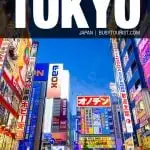When traveling to Japan, it’s only natural to want to find things to do in Tokyo. It is, after all, the largest and busiest metropolis in the world.
With so much daily traffic and flow, your itinerary is bound to blow up quickly!
Still, finding the best way to occupy your time can get a bit daunting when there’s so much to choose from.
However, if you are short on ideas of what to do in Tokyo, here are some to consider.
1. MariCAR Tour In The Streets Of Shinagawa
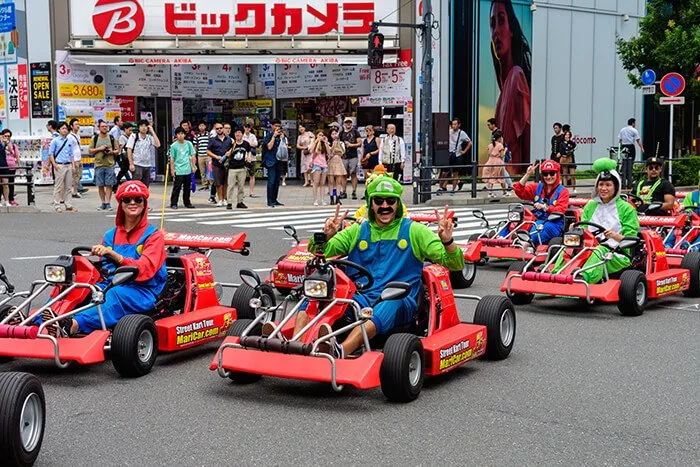
MariCAR Tour
This is a great option if you want to fit various things to see in Tokyo into one fell swoop.
Your rental car is actually a go-cart which you drive along the city streets, having a blast and sightseeing as you go!
The tour begins at 1-23-15 Kitashinagawa, Shinagawa City, Tokyo 140-0001, Japan where you choose your travel route and fun costume.
The 5-star establishment has an accommodating, bilingual, friendly staff that will guide you through the city streets.
It’s not quite a guided tour as much as it is a brisk flash to give you a general feel for what Tokyo has to offer.
Don’t expect the informational stops from this tour, and don’t assume it’s your chance to compete in a live-action Mario Kart race.
You can add a GoPro to your rental and even bring your own Disney-themed costume to drive in. Keep in mind that you’ll need an international driver’s permit before arrival.
This activity isn’t 100% family-friendly since the carts are single-seaters and drive along the main roads.
For adventurous adults, though, it’s a good way to get out and about without walking everywhere.
Directions:
From the Kita-Shinagawa Station, go southeast along Daiichi Keihin/National Highway 15 toward Gotenyama Street.
Turn left at the Kitashinagawa intersection, then right onto Old Tokaido Street. Make an immediate left at the Kitashinagawa Ophthalmology Clinic. MariCAR is on the left.
2. Kappabashi-dori
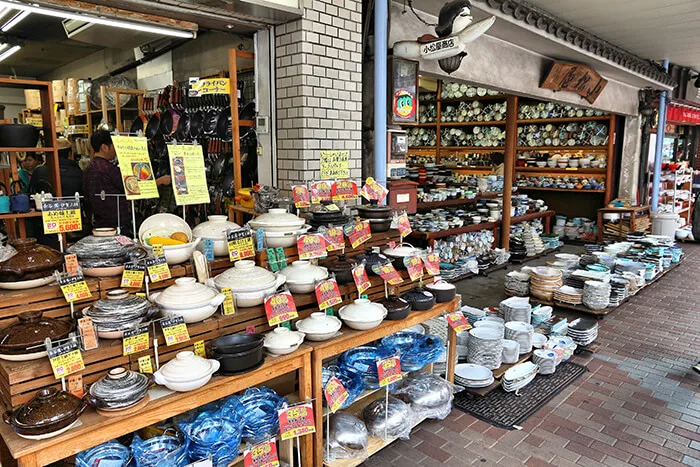
Kappabashi-dori
Kappabashi is a street, known widely as Kitchen Town.
It’s located at 3-18-2 Matsugaya, Taito City, Tokyo 110-0036, Japan and fixed conveniently between Ueno and Asakusa. The street is completely populated with shops that carry kitchen items.
There are over 100 stores with great variety in restaurant fixtures, model foods for display cabinets, and even home goods for your personal cooking domain.
Kappabashi is popular among local shop owners as well as tourists who want to purchase something to bring back home.
It’s an authentically native market for real restaurant use but also known to be a magnet for tourism.
Therefore, you’ll need to budget and prepare for shocking price tags before purchasing.
The items sold are of high quality and standard for even non-Japanese food restaurants.
This street has everything you need to make food except the food itself. It also gets a decent ground-level view of Tokyo Skytree from afar.
Directions:
From Tawaramachi Station, walk a few minutes down Asakusa-dori. When you see the giant chef head atop of a corner building, you’ve arrived.
Turn right at this building to enter Kappabashi Street.
3. Senso-Ji Buddhist Temple
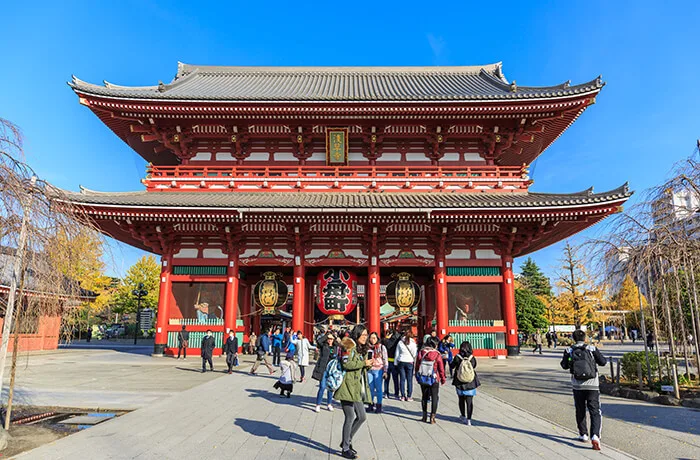
Senso-Ji Buddhist Temple
Asakusa is regularly visited by locals and tourists for beautiful Senso-ji, a Buddhist temple at 2-3-1 Asakusa, Taito City, Tokyo 111-0032, Japan.
It has a high amount of value in Japan as it embraces and symbolizes their spirituality.
Senso-ji has its busiest times in late spring during Golden Week, Sanja Matsuri, and Oshogatsu. Other busy days include weekends and general public holidays.
You may not find it completely scarce, but coming at certain moments of the day offer such peace.
Dawn and dusk (or later) are when the temple’s architectural beauty and the magic of the environment really come together in a blend of natural and structural charm.
It’s quite fitting since everything about Tokyo is an embrace of blending elements.
You can come when the crowds do to be a part of the celebration of these moments and really appreciate the temple at its most popular times.
You can also opt for more solitude during the less busy times for a quieter retreat.
Senso-ji is the oldest temple in Tokyo with loads of history. It’s extremely special, but important enough to be shared with the world free of charge.
The temple is also accessible 24/7, except for the main temple which does have a closing time.
Directions:
From Asakusa Station, go south past a sushi restaurant and turn left at the end of the block.
Walk toward Kokusai-dori, then cross it to the other side of the highway. Continue straight until you reach a fork.
You’ll go down the second road from your left, remaining on the leftmost side of the Sukiyaki Bar.
Follow this street all the way down to the Asakusa Park, where you’ll turn left.
4. Omikuji At Senso-Ji
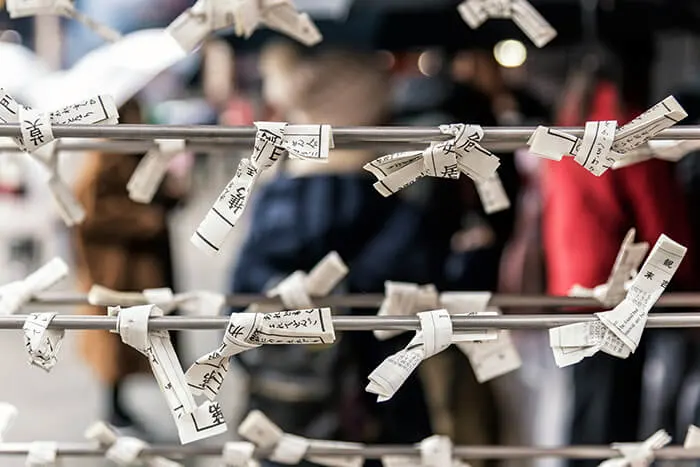
Omikuji
While you’re in the area, you can take part in one of the many practices that the Japanese hold dear.
At a shrine or temple, you can get a fortune, or omikuji, in exchange for an offering.
After receiving your fortune, you may keep the good omikuji or knot a bad one onto the branch of an omikuji tree.
The Buddhist spirits will take your troubles and keep you from misfortune.
To tourists, it’s a fun activity or a cutesy tradition. The spiritual beliefs of the Japanese, however, keep this practice alive and in perspective.
To get a feel for what drives the heart of this evolving culture, this one is a must do!
5. Meiji Jingu
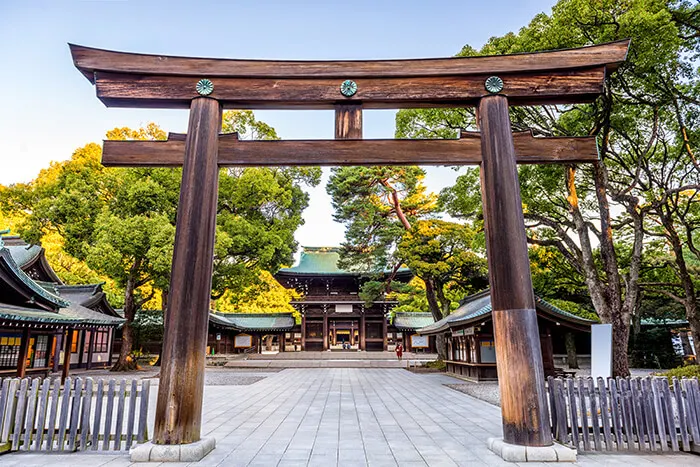
Meiji Jingu
The Meiji Jingu is a Shinto shrine that can be found at 1-1 Yoyogikamizonocho, Shibuya City, Tokyo 151-8557, Japan.
It comes with rich history and value as it’s dedicated to the deified Emperor Meiji and Empress Shoken.
It’s home to a seasonal iris garden and surrounded by a century-old, man-made forest that completely isolates you from the busy city.
Like the Senso-ji, this shrine hosts the occasional traditional wedding that you may be lucky enough to see.
This family-friendly, wheelchair accessible haven is a must-see. Its stress-relieving character lets you break away from the hustle and bustle.
No matter what time of year you visit, there are new observations with each season.
The vendors have fresh meats and cheeses for sale as well as novelty talismans.
Information is posted in Japanese and English, making it easier to read up on the history.
As a note, be cautious that you abide by photography rules in certain spots.
Directions:
From Harajuku Station, turn right and go south. Turn right at the intersection, staying on the same block, keeping the Harajuku Station on your right side.
Cross the street at the end of the block and enter the forest toward the Meiji Jingu First Torii Gate.
6. Omoide Yokocho
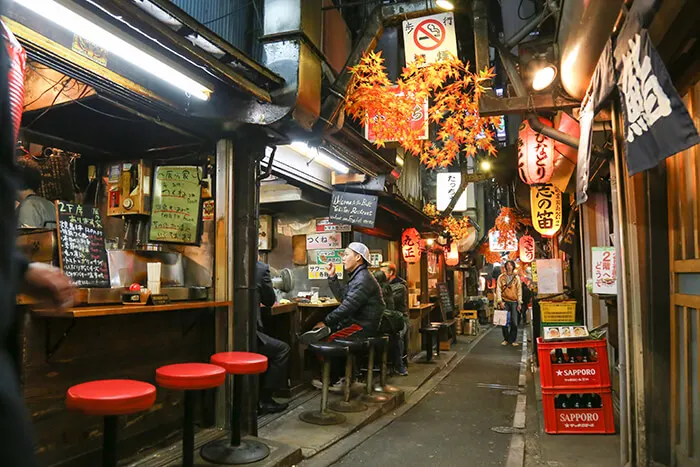
Omoide Yokocho
If you’ve already decided upon tasting the fine food at Buchiumaya, why not take a stroll through the area?
Particularly, down Omoide Yokocho, also known as Piss Alley or Memory Lane. This is a strip of bars and food spots that comes alive as the sun goes down.
It’s located in an alley at 1-2 Nishishinjuku, Shinjuku City, Tokyo 160-0023, Japan, and it’s found on every list of things to do in Shinjuku.
Most of the stores offer the same food as other local restaurants but at higher prices. It is a tourism hot spot, after all.
Nevertheless, visitors come from all over for the bright, upbeat, busy, and friendly environment.
The alley is full of neon lighting, helping it to stand out from the city.
Come before or after operating hours for a clearer view of the alley and an opportunity to take unrestricted photos.
Directions:
From the Shinjuku-Nishiguchi Station, go south along Miyakodo 414 and cross it at the intersection toward Omoide Yokocho. Follow this road to get to the alley.
7. The National Art Center
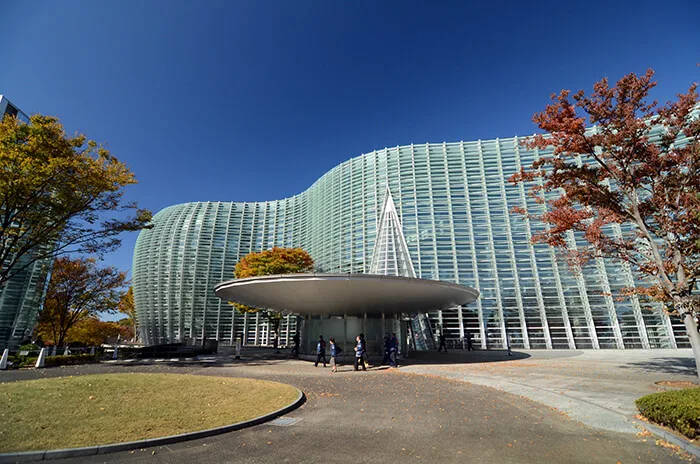
The National Art Center
Tap into your inner art buff at The National Art Center at 7-22-2 Roppongi, Minato City, Tokyo 106-8558, Japan.
As the best things to do in Tokyo go, this is another of the 5-star visits you won’t regret.
The center holds exhibitions of both Japanese and international art. It’s wheelchair accessible throughout and has a restaurant inside.
You’ll find entire rooms dedicated to differing subjects of artistic value in this large facility.
During certain times of the year, it can get very busy, so buying tickets in advance may be a good idea.
An English audio guide costs extra and art is always subjective. Be sure to check the current exhibits ahead of time to decide if you’d like to observe.
Directions:
From Nogizaka Station, walk southwest along Michido 413. As you approach the Tokyo Metro Chiyoda Line, the art center will be on its left.
8. Ryogoku Kokugikan Sumo Stadium
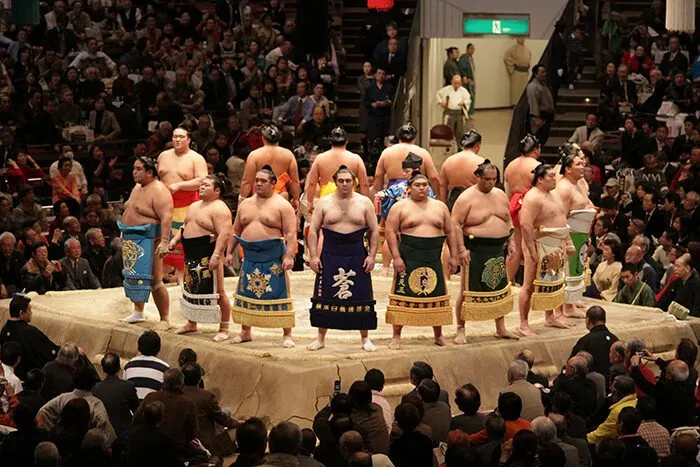
Ryogoku Kokugikan Sumo Stadium
One of the most authentic things to see in Tokyo is a sumo wrestling match. Yes, they still exist!
Located just 6 minutes from Chanko Tomoegata restaurant at 1-3-28 Yokoami, Sumida City, Tokyo 130-0015, Japan, it is the most well-known sumo hall in Tokyo.
Sumo wrestling is a longtime Japanese cultural activity, and Japan is the only country where you’ll find professional sumo wrestling.
You can also pay to see the practices when wrestlers are not fighting in tournaments.
Timing is everything with this activity as there are only 6 tournaments per year, lasting 15 days only in January, May, and September.
Even if you didn’t opt for exploring the Ryogoku area, one of the top things to do in Tokyo is to watch a sumo match.
The sports arena often referred to as the Ryogoku Sumo Hall, has hosted the summertime Grand Sumo Tournament: Kokugikan since 1985.
Directions:
From Ryogoku Station, go north on Kiyosumi-dori (463) toward Hosukai-dori.
Turn left at the Stationery Store and continue to pass the high school all the way down to the end of the road.
Make a left and use the short road to get to Kokugikan Street. Once you’ve reached Kokugikan-dori, turn left and follow to the end of the block where you’ll make another left.
9. Yanaka Ginza
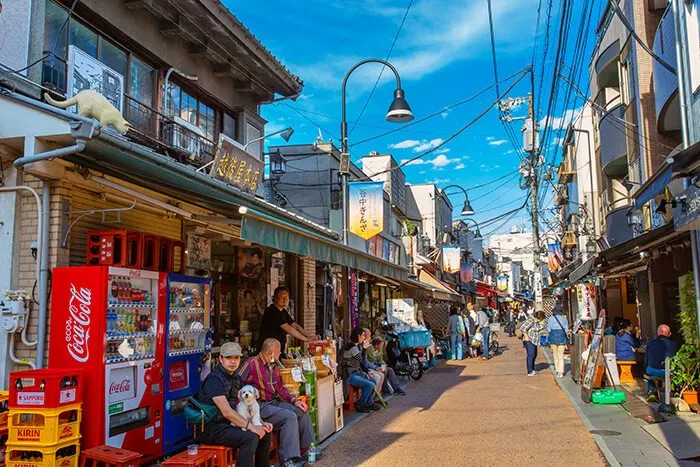
Yanaka Ginza
If you’ve come looking for more traditional places to visit in Tokyo, Yanaka Ginza is both traditional and amusing.
Another one like Kitchen Town, this is a shopping street full of several stores.
Yanaka Ginza has, for the most part, remained the same since the 50s, selling Japanese goods and traditional foods.
It’s part of what is known as “Old Tokyo” and is most appealing because of the atmosphere. It’s as if time hasn’t touched Yanaka Ginza.
If you’re prowling around for some great Japanese street food, you’ll find it here. The items sold are handmade and authentic, and pricing stays low.
Coming here on a tight budget shouldn’t break the bank because it’s all really affordable.
That might be thanks to humble vendors as well as the lack of competition you may notice elsewhere.
Yanaka Ginza does well for itself as it is and has no need to update or appeal to the new tastes of the world. It’s not as overwhelmed with city life, and that’s just how people like it.
Fair warning, this area is also known for its street cats that run free throughout the city. If you have allergies, you may have to consider the risks beforehand.
That’s not to say that the stores are unhygienic, however! They’re old-timey but clean.
You can immerse yourself in what downtown Tokyo used to be like back in the day since these shops and restaurants have survived natural disasters, wars, and social change.
Although Yanaka Ginza stays intact for its locals, you can find great souvenirs as well.
Directions:
From Nippori Station, Yanaka Ginza is just a short walk away at 3-13-1 Yanaka, Taito-ku, Tokyo 110-0001, Japan.
You practically follow your nose and discover the interesting culture of the backstreets of Taito.
The first thing you will see from the station is a stairwell where tourists like to sit and watch the sunset.
A large archway with a street sign will welcome you if a cat hasn’t already.
10. Tokyo Skytree
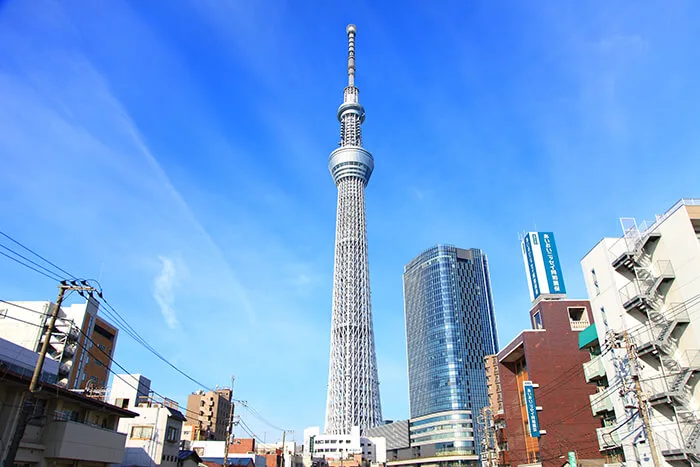
Tokyo Skytree
Tokyo, Japan is home to the world’s tallest tower called the Tokyo Skytree.
This hard-to-miss landmark, located at 1-1-2 Oshiage, Sumida City, Tokyo 131-0045, Japan, overlooks all things Tokyo and can keep you busy all day.
Tokyo Skytree is a broadcasting tower that holds areas for dining, shopping, and sightseeing.
It has an aquarium, grocery stores, and a Pokémon center. You also get to try out the massage chairs within or hang out at a cafe.
The Skytree has gift shops, viewing areas, a shopping mall, and the ultimate observatory up top.
Every moment inside of the Tokyo Skytree is worth mentioning. From the entry process to the floor names to the intense elevator to the observation deck.
The most talked about feature, of course, is the view from atop.
You get a 360-degree view that looks out and down at the same time thanks to some curved glass windows.
As with any tourist attraction, it can get crowded. Buying tickets in advance lets you enter through the special entrance, avoiding the line.
A great experience is paired with great service from the lively staff. Tokyo Skytree is an innovative member of its own class that won’t disappoint.
Directions:
From Oshiage Station, there is a sign pointing you in the direction of the Skytree right away. Simply follow the signs and escalators to the enormous tower and you’ve arrived.
11. Ueno Park
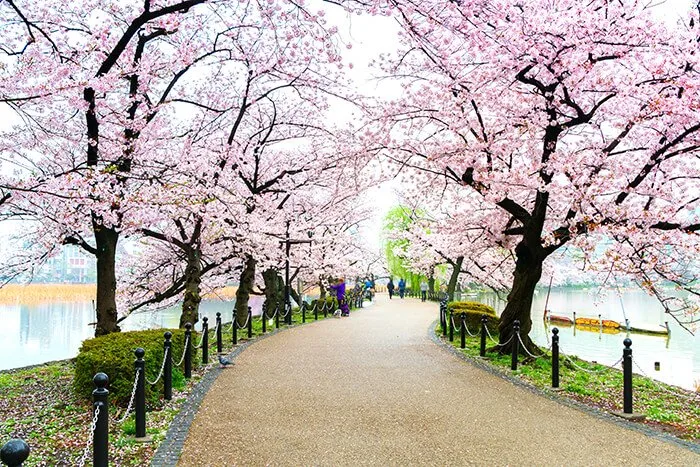
Ueno Park
The parks of Japan are truly stunning sights to see, and Ueno Park at 5-20 Uenokoen, Taito City, Tokyo 110-0007, Japan is no exception.
A public park that lies on what was once Kan’ei-ji Temple land is now the supplier of walking paths, boat rentals, a zoo, and museums.
The park never seems too busy thanks to the ample amount of space. Each site is kept clean and the atmosphere is generally serene and uplifting.
The best time to visit for sightseeing is when the cherry blossoms are in full bloom between March and April.
With all that it has to offer in entertainment and dining, the beauty of Ueno Park is more than enough reason to come visit.
Your entire day can be spent simply walking around and getting lost in the natural features.
Directions:
From Ueno Station, make your way to Ueno Park Street. Cross this street and go right. Just around the corner ahead is the entrance to the park.
12. Yoyogi Park
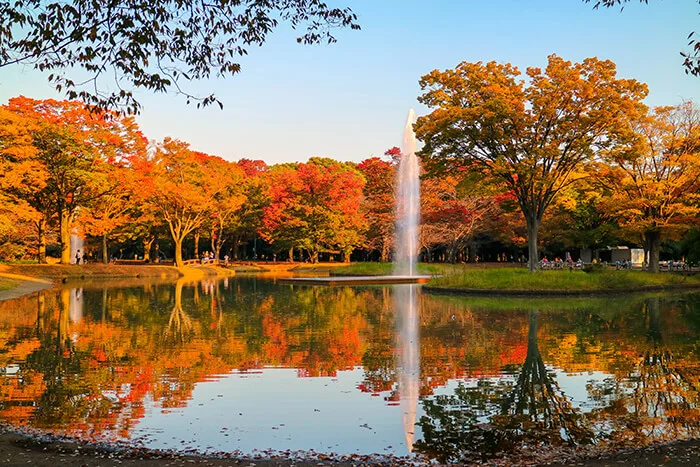
Yoyogi Park
The Yoyogi Park at 2-1 Yoyogikamizonocho, Shibuya City, Tokyo 151-0052, Japan is known for the Shinto shrine called Meiji Jingu.
It’s a popular place for picnics and peaceful walks surrounded by tens of thousands of trees. This park stands apart from the others because of its zen gardens.
You can walk various paths through the forest and discover these gardens or stumble upon the locals spending their downtime here.
Visiting this park is one of the greatest things to do in Tokyo if you want to witness locals performing, people doing yoga, or traditional Japanese weddings.
In your own interests, you may fish in the lake and also take your pet to the dog park.
Directions:
From Harajuku Station, go south to the intersection at the end of the block. Turn right. Make your way toward Michido 413 via the Jingu Bashi (Shrine Bridge).
Go left and follow the road to get onto 413. On the 413 road, go right, and the park is then accessible to pedestrians to the immediate right.
13. Ghibli Museum
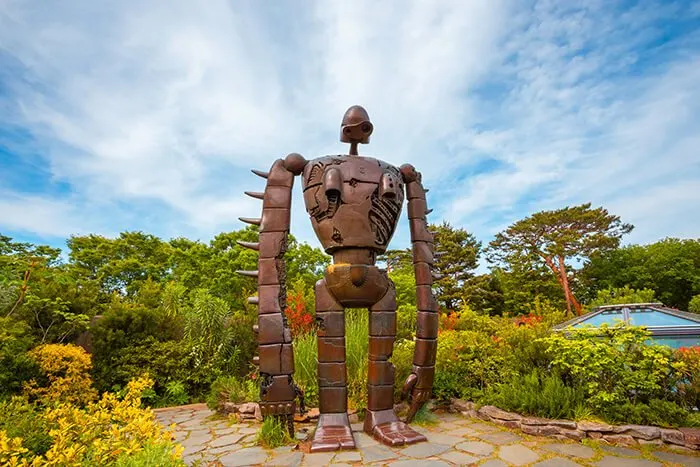
Ghibli Museum
If you’re a Studio Ghibli fan, there’s no debating that this is on the Tokyo itinerary.
To get into Japan’s famous Ghibli Museum, you’ll need to buy tickets in advance or book a guided tour.
Placed within the great Inokashira Park at 1-1-83 Shimorenjaku, Mitaka, Tokyo 181-0013, Japan, the museum is easily a focal point in the Mitaka area.
Inside, you’ll find a family-friendly business with a play area, a theater, and a rooftop garden.
Peruse around and find information on the ins and outs of animation. Gawk at the impressive attention to detail.
If you have the time, you can stop to purchase food and drinks. As always, this is a museum and the rules at other museums also apply here.
Directions:
From Kichijoji Station, you can walk a bit or take a short ride over to the museum. O
therwise, you can go west along Kichijoji Street (street 114), then make a left to stay on it. Follow this road through the city, Inokashira Park, and straight to the Ghibli Museum.
14. Shinjuku Gyoen National Garden
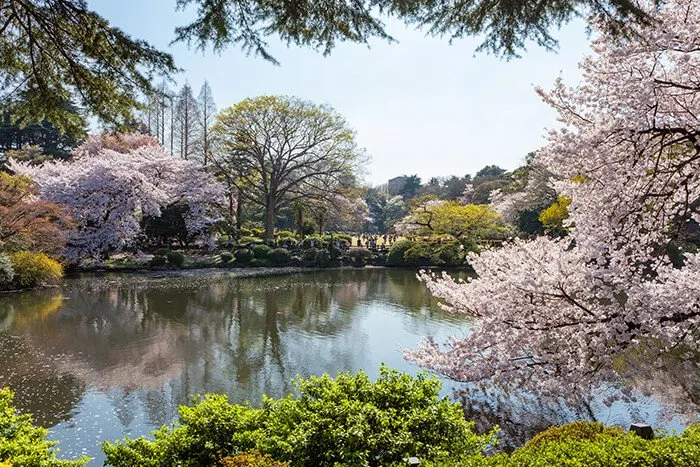
Shinjuku Gyoen National Garden
No matter what season you’re traveling to Japan, Shinjuku Gyoen National Garden in 11 Naitomachi, Shinjuku City, Tokyo 160-0014, Japan has something wonderful to see.
Here, you’ll stroll through large green areas, a well-landscaped garden, and flowers galore.
The garden is a popular hanami spot in April. In fact, it’s held in high regard as the place to be if you want to see cherry blossoms.
The roses are in full bloom in May, and the red leaves of autumn always attract attention.
It’s often quieter and more relaxing than Ueno or Yoyogi. You might find the tea rooms, greenhouse, and traditionally well-kept vibe to be more appealing as well.
This garden has an entry fee, but regulars typically get annual passes for year-round access.
Directions:
From the Shinjuku-Gyoemmae Station, you can head toward the Shinjuku gated entry or the Okido gated entry.
From Sendagaya Station, make your way through the Sendagaya entrance.
15. Tokyo Disneyland
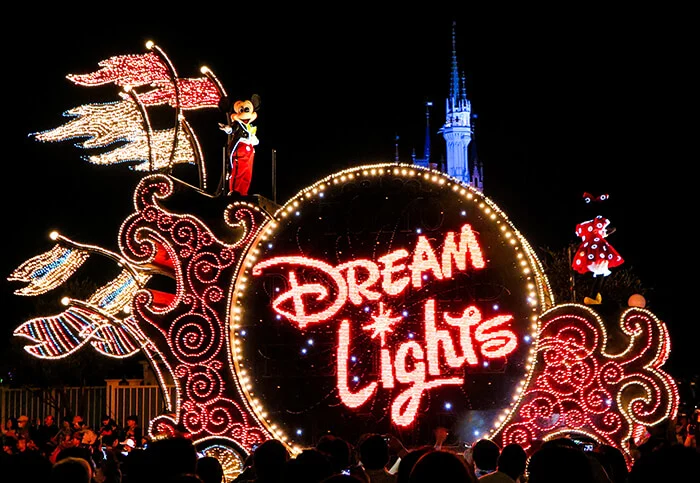
Tokyo Disneyland
An enormous amount of time can be spent at the Tokyo Disneyland in 1-1 Maihama, Urayasu, Chiba 279-0031, Japan.
Much like other Disneylands, this is an amusement park with the Disney theme.
Choosing the right time of year and the right days of the week to go are crucial if you can’t see yourself waiting in an amusement park line all day.
Weekdays are less hectic – if that’s possible for a Disneyland.
The theme park has a capacity limit and it’s not cheap. No Disneyland is cheap.
At the Tokyo Disneyland, you’ll encounter rides, live shows, fair food, souvenir shops, and Disney characters.
Directions:
From Maihama Station, find the Disney monorail which runs through the Resort Gateway Station.
This is the simplest method of mapping the place out if it’s your first time and you feel uneasy about your navigation skills.
16. The Imperial Palace
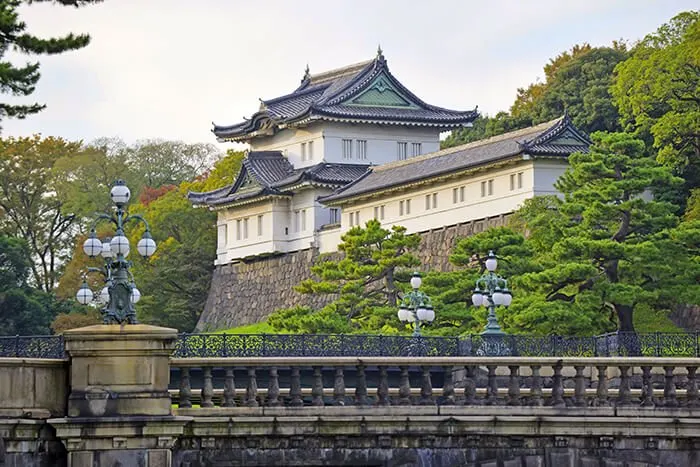
The Imperial Palace
The Imperial Palace at 1-1 Chiyoda, Chiyoda City, Tokyo 100-8111, Japan is yet another free attraction in Tokyo that’s a cultural “must do” for visitors and locals alike.
This is the home of Japan’s emperor.
It also contains homes, museums, offices, and archives. The East Gardens are a publicly accessible vision of beauty.
You can book tours in English, Japanese, and Chinese that are informative and organized.
The residences onsite are those of the Imperial Family, so you can only tour a limited portion.
Directions:
From Otemachi Station, travel west toward Hibiya-dori (street 403). Turn right onto Uchibori Street (street 301) and follow it around the palace grounds.
Go straight through the Takebashi intersection onto Daikancho-dori/Uchibori Street. This will take you to the Inui-mon Gate.
17. Hachiko Memorial Statue
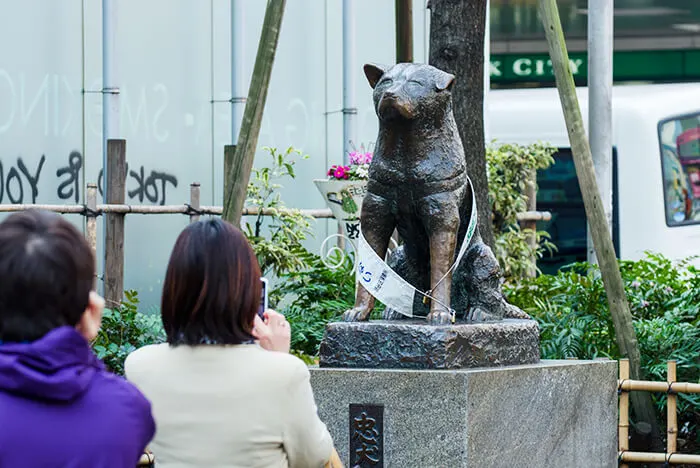
Hachiko Memorial Statue
The Hachiko Memorial Statue is more of a landmark than something fun to do.
It’s a simple, bronze statue that was constructed in honor of a famous Akita dog. The lasting power comes from its symbolism of loyalty.
It’s rightfully placed at 1-2 Dogenzaka, Shibuya City, Tokyo 150-0043, Japan, positioned just in front of Shibuya Station.
Try out a guided tour to hear the endearing tale of Hachiko.
Directions:
From Shibuya Station, navigate to the Hachiko Exit to go directly to the statue.
18. Kiddy Land
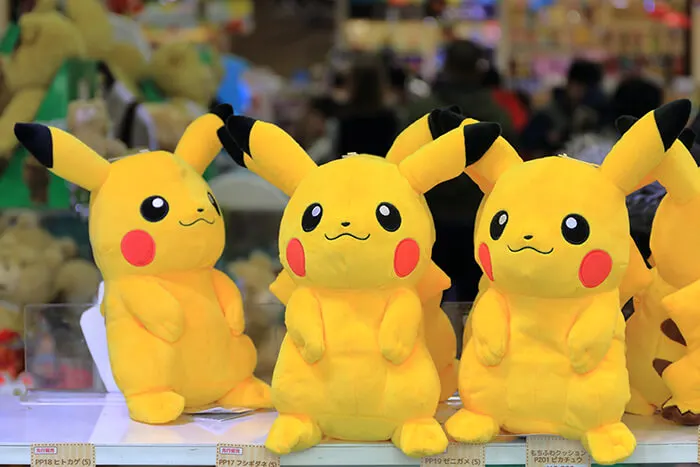
Kiddy Land
Kiddy Land’s main store in 6-1-9 Jingumae, Shibuya City, Tokyo 150-0001, Japan is a multi-story retail store that sells Japanese and American toys.
It sounds like an average toy store, but this could be the largest one you’ve ever seen.
The prices are higher than average, but you can flash your passport for tax-free shopping.
This vertical children’s mall also has a play area! The store accepts U.S. currency via debit card and presents toys that you may not see elsewhere.
This could be a shopping adventure for childless adults as well! As a bonus for the grown-ups, there is free WiFi to occupy you as your kids sift through toys.
Directions:
From Meiji-jingumae ‘Harajuku’ Station, walk southwest along Meiji-dori (road 305) toward Omotesando (street 413).
At the Jingumae intersection, go left onto the 413 road and follow it for a few minutes. Kiddy Land will be on your right across from a bus stop.
19. Ueno Zoo
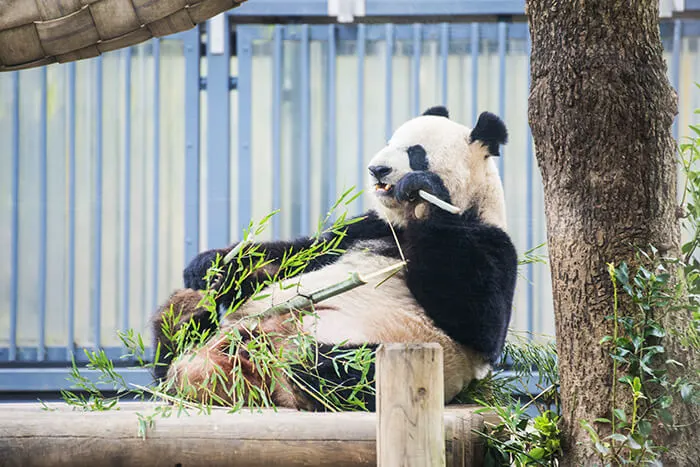
Ueno Zoo
Located within the Ueno Park at 9-8-3 Uenokoen, Taito City, Tokyo 110-8711, Japan, this is Japan’s oldest zoo.
There are over 400 animal species inside and a petting zoo where you can interact with some animals.
The Ueno zoo also houses squirrels and mice as well as other non-exotic creatures in its local exhibit.
There’s a 5-story pagoda (a tower) where you can view the park from above. It’s never completely packed, so you can get the most out of a group trip.
Ueno’s exhibit barriers give you a close-up view of the animals like no other. Come in as early as possible to make sure you see everything before closing time.
Some exhibits close early and lines get longer as the day moves along. Regardless, the lines still move quickly.
Directions:
From Ueno Station, navigate to the Park Exit and continue into the park. The zoo is about 5 minutes from the Station.
20. Yakatabune & Cruiser Funasei
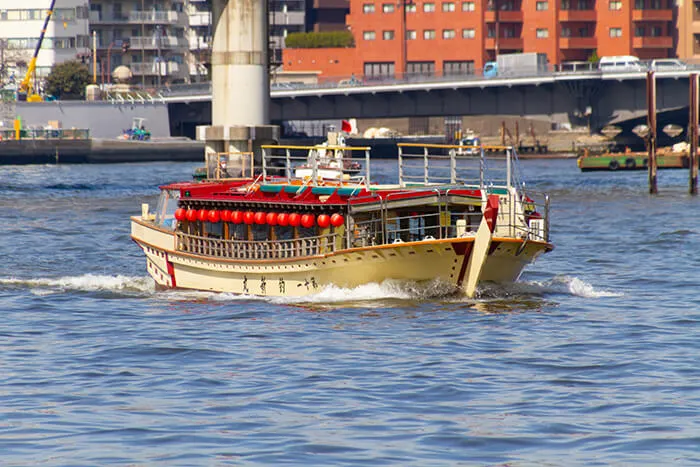
Yakatabune & Cruiser Funasei
Being on your feet all day is exhausting. Public transportation can be overwhelming. Riding a bike requires attention that you’d rather give to the sights of Japan.
So, what do you do?
Ride in a boat, of course!
Climb aboard a yakatabune at 1-16-8 Kitashinagawa, Shinagawa City, Tokyo 140-0001, Japan.
It’s essentially a mini cruise around the local waters, giving you a beautifully reflective view of Tokyo.
Going at night is highly recommended, but really any time of day is wonderful.
Unlimited drinks, quality food, and high-end service earn this business both recognition and 5 stars.
Directions:
From Kita-Shinagawa Station, go southeast along Daiichi Keihin/National Highway 15, then turn left to exit. Go left onto Old Tokaido Street.
Go right at the Kitashinagawa Animal Hospital and continue through the intersection. When you’ve reached Higashi-Yatsuyama Park, turn right to find the cruiser docks.
21. Owl Village In Harajuku
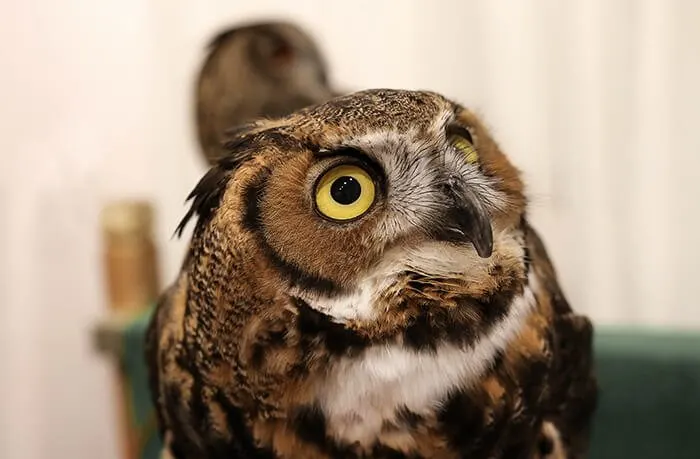
Owl Village
Harajuku’s Owl Village is an owl-themed bistro located at 1-21-15, Jingumae, Shibuya City, Tokyo 150-0001, Japan.
Everything you order is reflective of adorable and mysterious owls. Even the beer!
This family-friendly restaurant serves breakfast, desserts, and other sweets with the owl motif.
In a separate room, Owl Village completes your experience with a chance to interact with some real owls!
Of course, this extra special perk doesn’t come with the check. You’ll have to pay a fee to gain access to the birds for about 30 minutes or so.
Some of the staffs speak English to accommodate guests.
To give you the most memorable visitation, the staff will take a picture of you and a bird with your own device. You can also buy owl souvenirs in the attached gift shop.
The place gets busy, so make a reservation if you really want in since space is limited.
Directions:
From JR Harajuku Station Takeshitaguchi, walk across the crosswalk toward Shinjuku. Owl Village shares a building with a ramen restaurant. Look for lot 4F.
22. Chanko Tomoegata
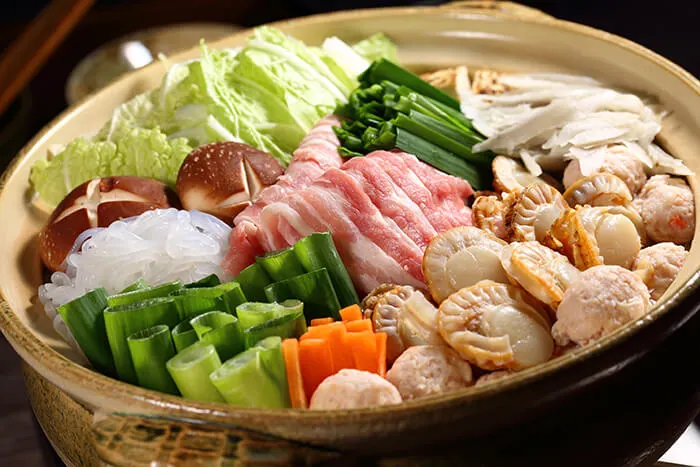
Chanko Tomoegata
Chanko Tomoegata is one of many Chanko restaurants that serve colorful, sumo-sized meals.
Located at 2-17-6 Ryogoku, Sumida City, Tokyo 130-0026, Japan, it’s nestled in the city by museums, restaurants, stores, and some historical landmarks.
Chanko Tomoegata might be on the pricier end if you’re on a budget, but you may find it reasonable after your visit.
This chanko restaurant, in particular, has become quite famed for its excellent service, traditional atmosphere, and quality food.
It’s cozy yet spacious enough for groups. The servers speak enough English and are happy to be of great assistance.
An English menu with plenty of images is available as well! In it, you’ll find the highly recommended sumo wrestler fuel, the Chanko Nabe.
The restaurant is meant to serve food fit for athletes. Specifically, sumo wrestlers who actually do come to eat here since it’s close to the Ryogoku Kokugikan.
Reservations are not needed, but they are recommended during peak seasons.
Directions:
From Ryogoku Station, go south on Kiyosumi-dori, following this road for three rights, two lefts, another right, and one last left until you reach the restaurant.
23. Shibuya Morimoto
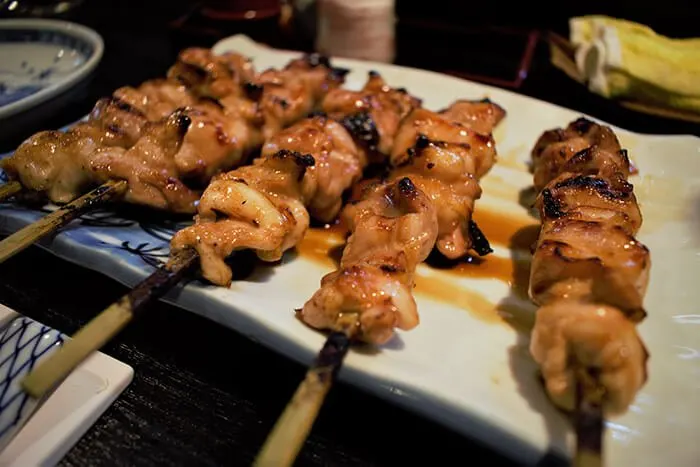
Shibuya Morimoto
Of the many things to do in Shibuya, visiting a Yakitori restaurant is at the top of recommendation lists.
Critically acclaimed for its Yakitori and Izakaya, the Shibuya Morimoto can be found at 2-7-4 Dogenzaka, Shibuya City, Tokyo 15-0043, Japan.
This restaurant carries skewered chicken as its staple and offers a bar that serves cheap snacks to accompany drinks. The portions are quite large and the vibe is very laid back.
It’s renowned for its fast, bilingual, and accommodating service.
For your first visit, many recommend getting a course menu in order to get a taste of everything on one platter.
Directions:
From Shibuya Station, go westward toward Inokashira-dori/Koen-dori.
At the Shibuya Station intersection, continue onto Dogenzaka. Make a left and you’ll arrive at Shibuya Morimoto.
24. Maidreamin Akihabara Electric Town Exit
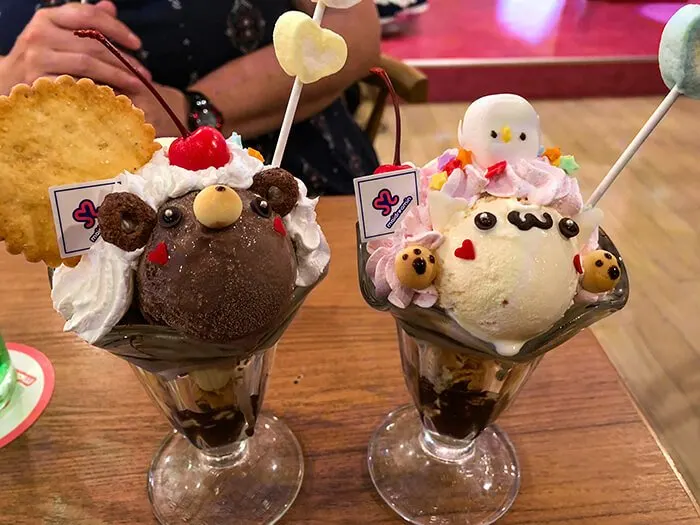
Maidreamin Akihabara Electric Town Exit
Maidreamin is a cafe that offers something very unique to your Japanese experience.
Maid cafes are a popular subgenre of the cosplay cafe where the waitresses wear maid uniforms and refer to guests as “master” or “princess”.
Since Akihabara is the birthplace of the maid cafe, it’s only fitting that you visit this area for your Maidreamin adventure.
There are multiple Maidreamin cafes in Akihabara alone, but this one at 1 Chome-14-1 Sotokanda, Chiyoda City, Tokyo 101-0021, Japan is just outside the Akihabara Station!
To get a sense of modern Japanese otaku culture, this pop culture staple is one of the many fun things to do in Tokyo.
It draws in younger generations as well as non-otaku groups, couples, and even children!
Your visitation is timed at 1 hour, but by requesting a “Dreamtime Extension” and paying another entry fee, you may stay longer.
Be sure to make a reservation so you don’t miss out on a live performance from the maids themselves.
The maids wear badges that indicate whether they will be performing on stage or if they can sing songs upon request.
For a more personal experience, you can order a menu that includes a performance for your table.
Not only are the characters fun to watch, but the food and drinks are also dolled up in cute ways and your meal is “blessed” with a magic spell to make it tasty.
Although you’re not allowed to photograph the maids, you can take pictures of your group and food.
You also have the opportunity to buy photos and other memorabilia from the restaurant.
Directions:
From Akihabara Station, go south and pass the Travel Service Center (it should be on your left as you pass).
Stop at the Akihabara Nomura Building. Maid cafe is about minutes from Akihabara Station.
25. Moomin Bakery & Cafe
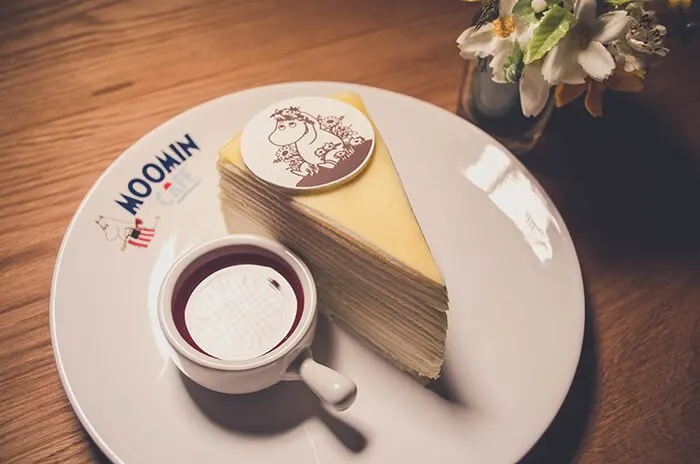
Moomin Bakery & Cafe
While it may seem like a stretch, “The Moomins”, a Finnish television show, is a big part of modern Japanese culture.
It’s so popular that there is a restaurant dedicated to the show and its cutesy characters.
The Moomin Bakery & Cafe is a family-friendly dessert bakery that serves various foods that you eat at a table alongside a lovable, life-sized plushy Moomin.
Located at 1-1-1 Kasuga, Bunkyo City, Tokyo 112-0003, Japan, it’s within walking distance from the nearest train station.
Much like the Maidreamin restaurant, Moomin Cafe is designed as more of an entertainment option than a high-quality eatery.
Having said that, the bakery offers a selection of international desserts that still taste quite delicious!
It comes with a gift shop full of Moomin stuff, and the menu is available in English with pictures for convenience.
Many are quite surprised that a novelty store and cafe can be so expensive, so be prepared.
It should also be noted that single guests are no longer seated with a Moomin character. It’s more geared toward childhood nostalgia and youth entertainment, anyway.
Directions:
From Korakuen Station, go south on the Tokyo Metropolitan Route 436 toward Kasuga-dori. Turn left at the Korakuen Station Square intersection onto Metropolitan Route 434.
The Moomin Bakery and Cafe will be on your left.
26. Robot Restaurant
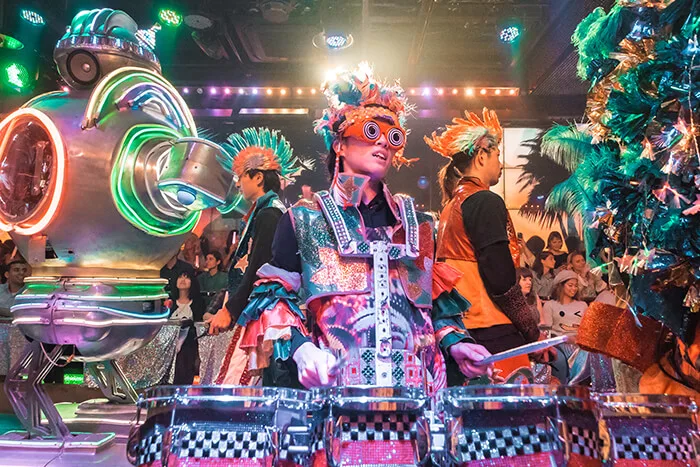
Robot Restaurant
The Robot Restaurant at 1-7-7 Kabukicho, Shinjuku City, Tokyo 160-0021, Japan is a 4-star performing arts theater with a restaurant and bar.
It carries the pop culture theme of futuristic robots with a musical twist.
The dancing and laser lights add to the fun; but if the loud music is a bother, they have sound blocking headphones available.
Because it’s geared towards the entertainment aspect of dining, the prices are higher than regular restaurants.
The show is said to be a unique experience for visitors of all kinds – even locals!
Directions:
From Seibu-Shinjuku Station, go southeast down Seibu Shinjuku Station Street.
Turn left onto Shinjuku Seibu Ekimae Street. At the road’s end, make a right, then an immediate left.
Continue straight until you see the Casablanca night club. Turn left after the club and the restaurant will be on your left.
27. Rainbow Pancake
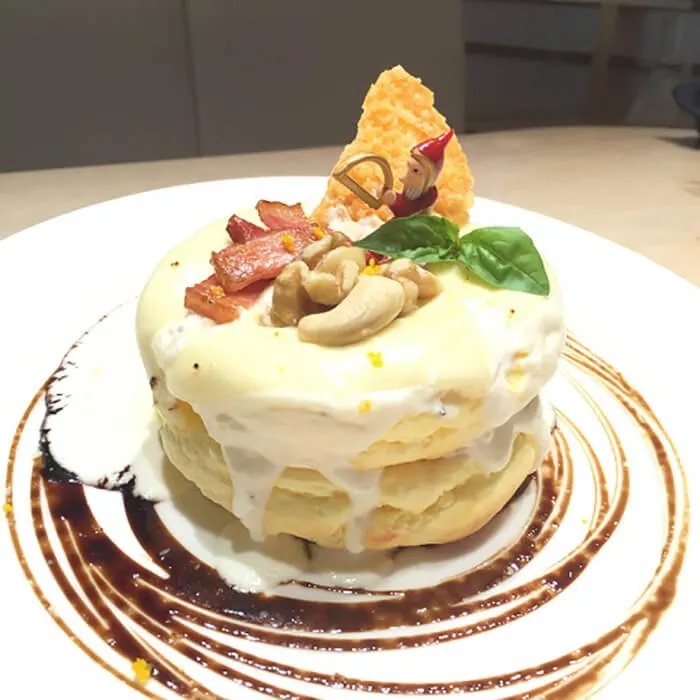
Rainbow Pancake
Out for breakfast? A growing fan favorite in Tokyo food is the super fluffy and decorative Pancakes.
These aren’t your ordinary pancakes. Japanese pancakes are beautiful, jiggly pieces of culinary art that taste as good as they look!
The boom in popularity has led to pancake shops popping up all over Tokyo, but traveling to Shibuya can offer both variety and a bit of authenticity.
Rainbow Pancake offers the commonly sought after fluffy pancake at 4-28-4 Jinguame, Shibuya City, Tokyo 150-0001, Japan.
You’ll need a reservation since, like many food places, the limited seating is packed quickly and often.
The shop carries an assortment of wiggling pancakes in many flavors. The staff is reportedly friendly, and some even speak English.
While it can take 15 minutes to an hour just to be seated, reviews say that these cloud-like breakfast treats are worth the wait.
Directions:
From Harajuku Station, you can walk eastward down Takeshita Street for a bit. When you meet the Takeshitaguchi intersection, cross the street and go right along Meiji-dori (305).
Turn left at the same Takeshitaguchi intersection and use the road that keeps New Balance Harajuku on your right and the Outdoor Sports Store on your left.
Turn right after the Nadia clothing store and follow this road to the curb.
Rainbow Pancake is on the curb next to a jewelry store. It’s approximately 6 minutes from the station.
28. Ramen Street
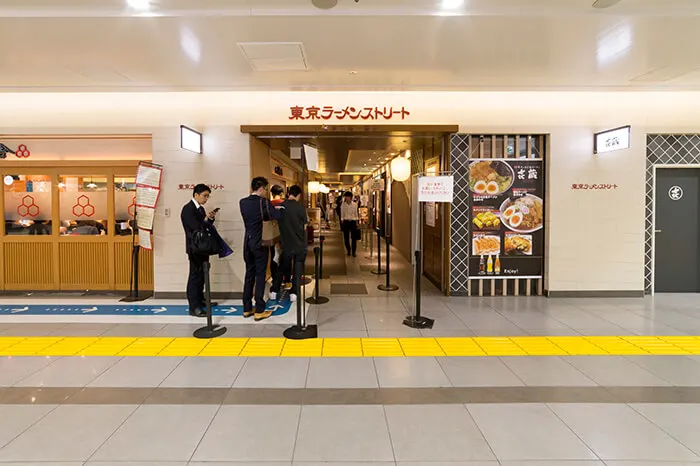
Ramen Street
Underneath of Tokyo Station, on the Yaesu side, is an extraordinary underground mall.
Located within at 1-9-1 Marunouchi, Chiyoda City, Tokyo 100-0005, Japan is an entire street dedicated to the wonders of ramen noodles.
A food staple in Japan, and throughout the rest of the world, ramen is served in special dishes from eight different ramen shops on this street alone.
If you’ve come for a true taste of Japan, you’ll find it in the ramen of Ramen Street.
Though space is a bit cramped, the food is why you come once and return often.
Being mentioned on about 6 different websites thus far definitely helps to perpetuate the popularity.
Ramen Street has become critically acclaimed for its bustling atmosphere that envelopes you as you enjoy authentic noodles and friendly service. It’s both cheap and fantastic!
Directions:
You’ll begin within Tokyo Station and leave down B1F towards the northeast stairs. The stairs lead directly to the Ramen Street entrance.
29. Buchiumaya
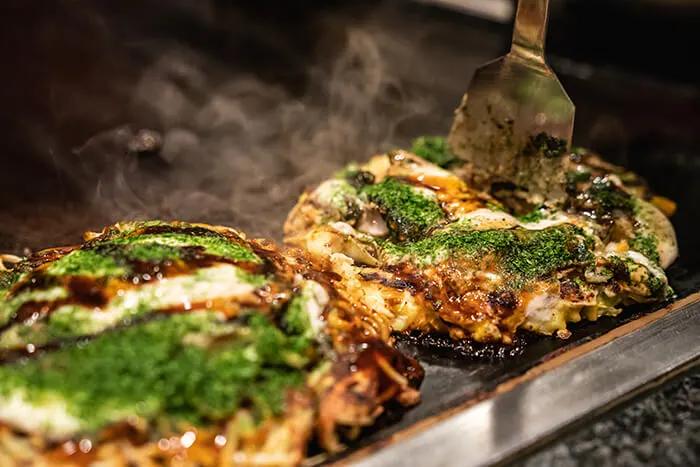
Buchiumaya
Osaka, Japan is known as the gourmand’s paradise, serving the best okonomiyaki.
If your trip is exclusive to Tokyo only, you can still enjoy the famed okonomiyaki in the Shinjuku area.
The Buchiumaya is a small establishment located at 7-22-34 Nishishinjuku, Shinjuku City, Tokyo 160-0023, Japan.
It has earned a 5-star rating for the taste, quality, and execution of its very affordable dishes.
To add to your dining experience, you get a mom & pop vibe from the family-owned restaurant.
You can order from an English menu and watch your meal be cooked right in front of you.
One okonomiyaki dish can serve two people, saving you time and money.
A reservation isn’t necessary, but you may want to come early to avoid a long wait. Even with the tummy-rumbling aroma teasing you from afar, trust that it’s worth the wait.
On your list of things to do in Shinjuku, visiting a quaint and simple yet dazzlingly delicious restaurant like this is a must do!
Directions:
From the Shinjuku-Nishiguchi Station, go north on Toll Road 414 toward Ome Highway/Road 302/Road 4.
At the Shinjuku Dai-Gard West intersection, resume straight onto Otakibashi-dori/Michido 302.
Turn left at the Nishi-Shinjuku Health Center intersection, then right after the Izakaya restaurant.
Continue to the end of this road and the restaurant will be in the building directly across the street.
30. Mr. Kanso
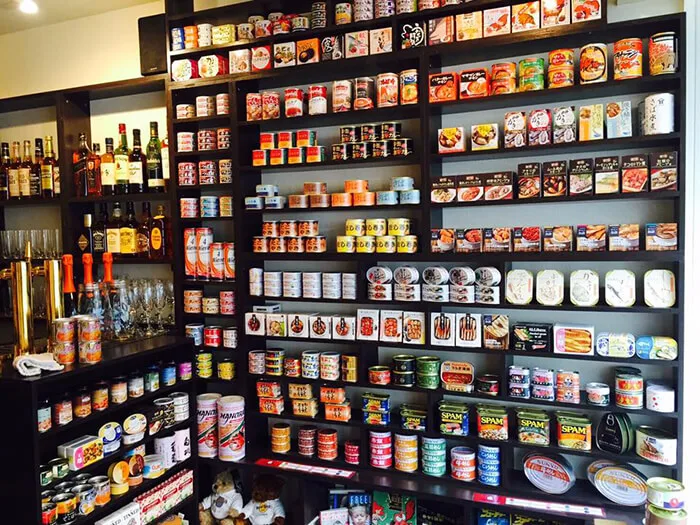
Mr. Kanso
This is a bar unlike any other. Tap into your inner “Prepper” by ordering from the largest selection of assorted canned goods you’ve ever seen. Outside of the store, that is.
Pick and choose canned foods from all over the world, and enjoy it right here! One such Mr. Kanso can be found at 3-12-6 Shibaura, Minato City, Tokyo 105-0023, Japan.
You can go with your usual pantry stock, or you can try something new.
Step out of the tired regular restaurant scene and into this new world of dining. The service isn’t too shabby, either.
Directions:
From Tamachi Station, follow Nagasi-dori southeast. Turn right on Shiokaze-dori and look to your left for the bar.
31. Pedestrian Scramble In Shibuya
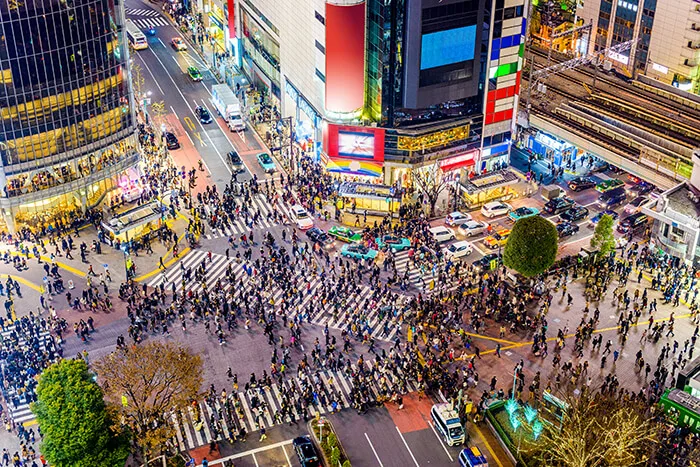
Pedestrian Scramble In Shibuya
One of the countless fun things to do in Tokyo is to watch or participate in what is known as the Shibuya Pedestrian Scramble.
Because this ward is so busy and crowded, the city’s traffic system is adjusted for people’s walking convenience.
Auto traffic is programmed to accommodate the hordes of pedestrians that cross regularly.
It’s so mesmerizing to see the flawless movement and structure that some tourists come to this area just to join in the march.
To Tokyo natives, it may not seem all that special. To others, it’s a unifying and exhilarating event.
Though the scramble is a daily occurrence, it makes the list because of the attractive sight when watching and the rush it gives when participating.
Similar movements are common in larger U.S. cities, but there is nothing quite like that of the Shibuya streets.
You can almost feel like you’ve gone through an initiation into Tokyo culture.
Among all the things to do in Shibuya, this one is also inevitable since your journey through the city will mostly take place on foot.
Directions:
This scramble takes place at the world famous 7-way intersection just outside the Shibuya Station around 2-24 Dogenzaka, Shibuya City, Tokyo 150-0002, Japan.
32. Golden Week In Tokyo
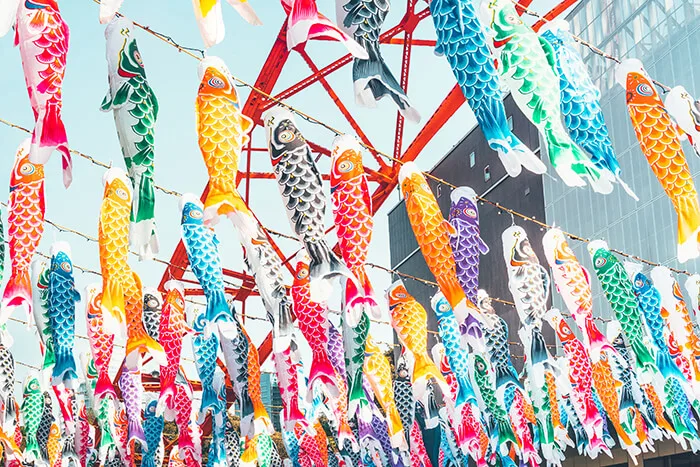
Golden Week
Golden Week is a string of Japanese holidays that are celebrated over the course of a week.
It runs from the end of April to the beginning of May and is a yearly event that causes an influx of action at the Tokyo tourist hot spots.
If you intend to visit at this time, be prepared to see a rise in population, prices, and inconvenience.
You can still have a blast with the locals by prepping ahead of time. Get tickets and reservations early, arrive early, and come loaded with funds.
There is no avoiding this holiday unless you stay inside for a week.
From the peaceful shrines to the roaring city streets and everywhere in between, there will be waves of energy that have Tokyo bursting at its seams.
33. Sanja Matsuri In Tokyo
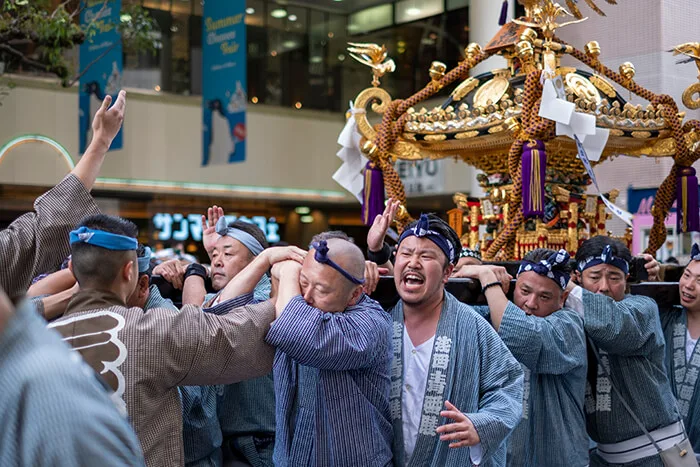
Sanja Matsuri
Sanja Matsuri is a spiritual festival that celebrates the founders of the Senso-ji Buddhist Temple in Asakusa.
The heap of celebration will be held in Taito City, around the Senso-ji Temple.
The festival is a weekend-long gathering at the end of May. It involves symbolic rituals, food, games, and music.
Since it’s shorter than Golden Week, you may find it more tolerable and easier to get around to other points of interest until it’s over.
34. Culture Day In Tokyo
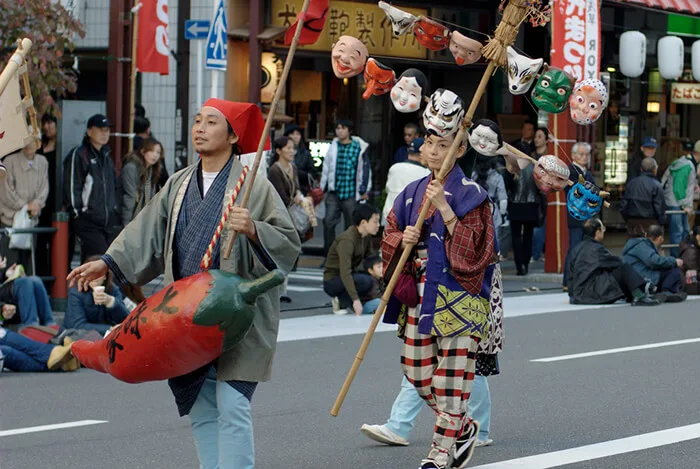
Culture Day (Wilhelm Joys Andersen / flickr)
Culture Day is a national holiday in Japan that honors and celebrates the many forms of art, culture, and academia.
If you’re in the Tokyo area in early November, you can catch a glimpse of this holiday in certain locations.
Occasionally, activities are held at Meiji Jingu Shrine or the awards ceremony can take place at the Imperial Palace.
The recent weather changes make it iffy as to whether or not you’ll see the traditional celebrations in public.
Some museums offer free entry on this day (November 3rd) to celebrate the historical side of the arts.
35. Japan Media Arts Festival
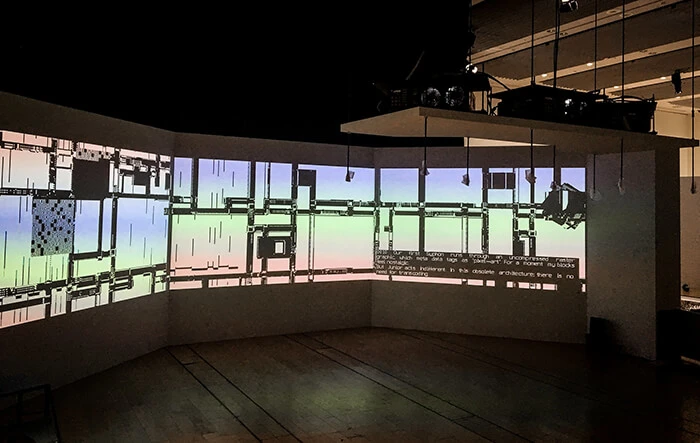
Japan Media Arts Festival (Rosa Menkman / flickr)
Taking place during the first half of June, this festival is held in the National Art Center of Tokyo.
If you already intend to be there for your trip, planning to come during this time will bring forth a different kind of museum experience.
Entry to the arts festival is free, but the main exhibitions will likely remain restricted to ticketed guests only.
This event is a great opportunity to learn about the current direction that Japanese media is headed towards.
36. Taco Che
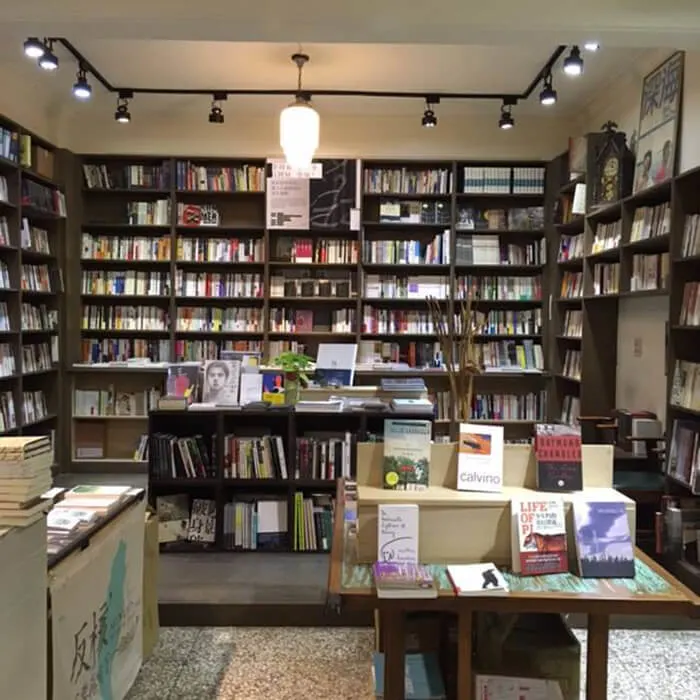
Taco Che
Taco Che is a book store at 5-52-15 Nakano, Nakano City, Tokyo 164-0001, Japan that carries manga, sketchbooks, novelty items, art, and alternative goods.
The size of the shop is cramped like many others as it’s shoved in wherever there’s space.
While this can be a decent store to find everyday anime and manga paraphernalia, it mostly houses sub-cultural stuff. Things of a different nature.
Having an open mind helps upon entry into the most alternative stores, regardless of which country you’re in.
If you’re into the occult and other miscellany type manga or graphic novels, you might just find a new escape in Taco Che.
Directions:
From Nakano Station, Taco Che is almost a straight shot ahead. Exit north and travel down Nakano-dori (420).
Turn right at the Arai intersection onto Waseda-dori (25). Enter the shopping mall to your right. It’s tucked away on the third floor.
37. Kabukicho
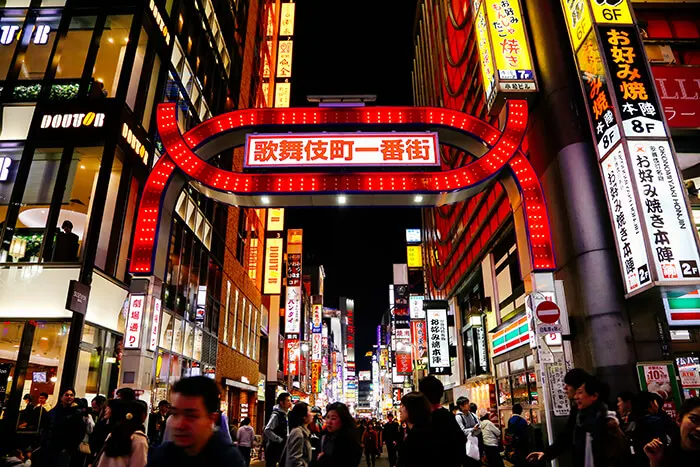
Kabukicho
The Red Light District of Tokyo is where you’ll find more adult-centered activities.
Night clubs and love hotels are there for your entertainment, but you can also wind down and have a good time with a group in this area.
Kabukicho, Japan is mostly an entertainment hub, but the term Red Light District often connotes a different meaning for entertainment.
One that might make you wonder what type of fun grown-ups can have here.
You can find companionship whilst barhopping, visit a raunchy store, or peruse the streets and take it all in.
Take heed when traveling through at night as there are always street workers who’ll solicit themselves onto you.
Directions:
The Seibu-Shinjuku Station drops off passengers directly into this district, leaving you to either wander as you please or search for specific places.
The red gate is your sign that you’ve entered Kabukicho.
38. Milky Rolik (Cuddle Cafe)
If stepping into a love hotel is too hardcore for your first time in Tokyo, perhaps a cuddle cafe will strike your fancy.
Men can pay to pick a girl, pay for specific cuddle positions, pay for playful contact, but cannot pay for inappropriate contact.
Places like Milky Rolik, located at 2-70 Kanda Neribeicho, Chiyoda City, Tokyo 101-0022, Japan, offer intercourse-free companionship in the form of cuddling.
The concept is executed much like a cafe with menus and custom orders that cost extra.
Directions:
From Akihabara Station, leave through the east side. Travel northbound through the city, following the path of the Tsukuba Express.
The self-advertised “reflexologist” is on the 4th floor of the Yokoshima Building.
39. Rose Group
This cuddle cafe is Facebook-operated with a questionable location. It’s geared toward lonely ladies who pay for time spent with a mystery man.
Women can buy company for 1 hour or up to 2 days if she has the money.
This questionable but momentum-gaining establishment is located around Ikebukuro,
Toshima City, Tokyo 171-0014, Japan. (Perhaps the real address is given after booking through Facebook.)
Directions:
From Ikebukuro Station, follow Mizuki Street all the way to Gekijo-dori. On Gekijo-dori, turn right.
Follow this road north toward the Waseda Academy. Once you approach the Waseda Academy Head Office, turn left at the intersection.
Continue down this road for 3 blocks then go right. There will be a fork that continues forward or breaks back to where you came from. On the corner of the fork is the cafe.
40. Golden Gai
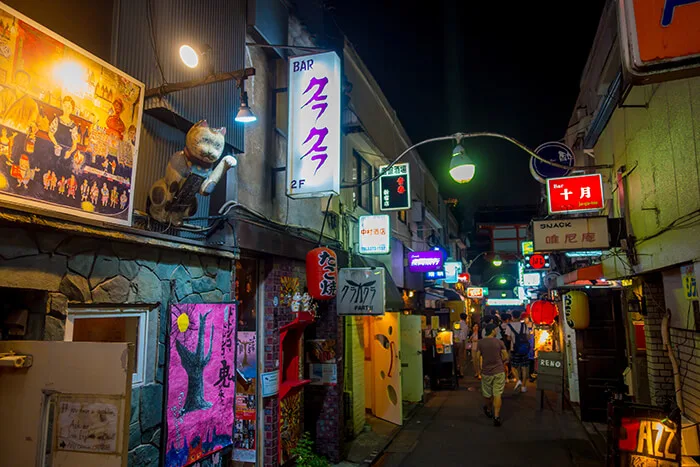
Golden Gai
If you’re already in Kabukicho, Japan and tight spaces are no big deal to you, touring Golden Gai at 1-1-6 Kabukicho, Shinjuku City, Tokyo 160-0021, Japan is an experience that leaves a mark.
Golden Gai is a system of alleyways that meet through very narrow aisles. Every bit of Golden Gai is occupied by hundreds of bars and restaurants.
Run amok in this makeshift strip where you never know what you’ll find.
Directions:
From Shinjuku Station, head east on Ome Kaido (302) toward Seibu Shinjuku Ekimae-dori. Go left toward Shinjuku Golden Street, then turn left onto Shinjuku Golden Street.
41. Meguro Parasitological Museum
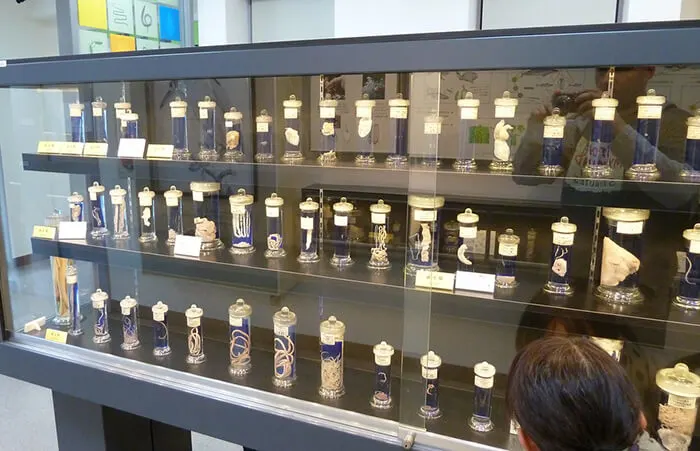
Meguro Parasitological Museum (Dushan Hanuska Follow / flickr)
This museum in 4-1-1 Shimomeguro, Meguro City, Tokyo 153-0064, Japan isn’t exactly what you would call a tourism magnet.
It is, however, the only museum dedicated solely to parasitology.
As the saying goes, “When in Tokyo, go see the parasites!”.
If you’re into the grotesque, scientific, or medical stuff, you can visit and mark it off your Japan bucket list! Those 5 stars didn’t come from nothing, you know.
Directions:
From Fudomae Station, go northeast and turn left onto Yamate-dori (road 317).
Follow this road all the way down to the Otori Shrine intersection where you’ll go left onto Meguro-dori (312). Follow signs for Todoroki. The museum will be on your left.
42. Espace Pachinko Parlor
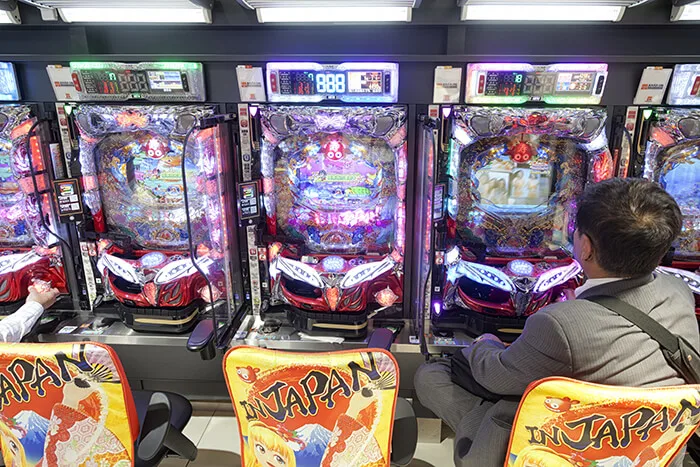
Espace Pachinko Parlor
Pachinko is an arcade game resembling Pinball.
It’s very popular in Japan and draws in many tourists who want to venture out in the world of arcade games as it combines pinball and gambling (in a sense).
Entering into a place like Espace at 1-25-4 Kabukicho, Shinjuku City, Tokyo 160-0021, Japan is like entering a casino.
The currency is tokens that you exchange with cash, and the game is arcade-style.
If you didn’t come to win big, you can feel the uncanny nostalgia and leave with no disappointment.
Directions:
From Seibu-Shinjuku Station, follow Shinjuku Seibu Ekimae Street to the parlor.
43. Tokyo Dome
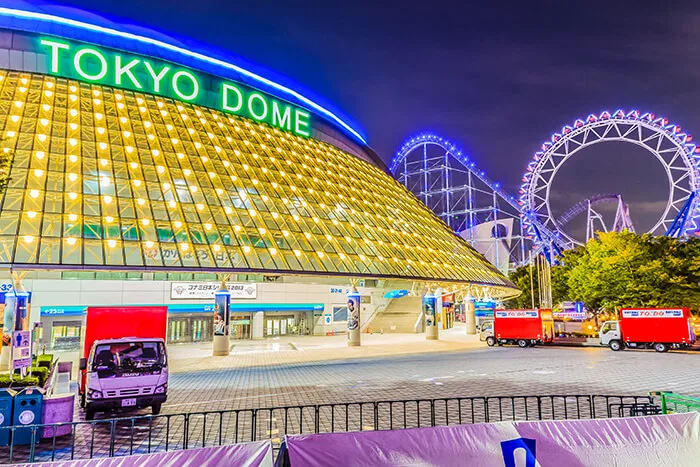
Tokyo Dome
Baseball is known as America’s favorite pastime, but Japan adores the sport just as much.
Nowadays, more crowds form at a Japanese baseball game than a U.S. one; and that’s not just because of the population difference.
Tokyo Dome, in 1-3-61 Koraku, Bunkyo City, Tokyo 112-0004, Japan, has been around since the 80s and holds up to 55,000 people.
In size and structure, it’s essentially the same as a U.S. field, so you’ll feel right at home for a bit.
Watching the game played in another country can be a fun experience as you spot the similarities and differences in customs.
Trade in hot dogs for octopus and accept that ties are possible, and you’ve got Japanese baseball!
Directions:
From Korakuen Station, go south on Chikawa-dori(436) toward Kasuga-dori (Route 254). Turn left at the Korakuen Station Square intersection onto Metropolitan Route 434.
Make a U-Turn at the Saluki Sakashita intersection and follow the signs for Hirakawamon / Suidobashi.
44. Odaiba
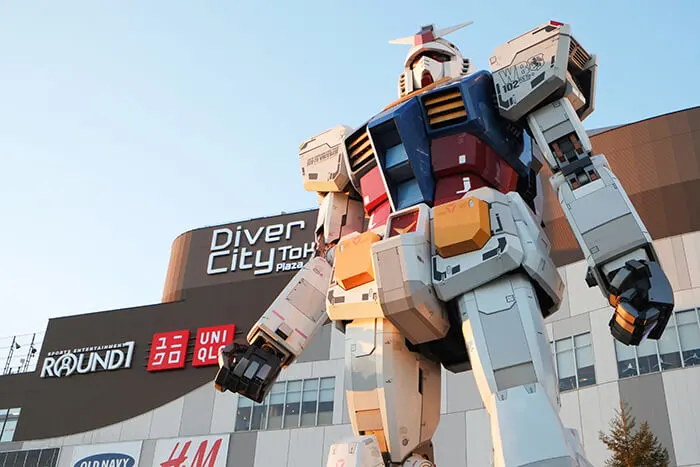
Odaiba
Visiting Odaiba should top your list of things to do in Tokyo, Japan.
It’s a man-made island that features shopping, museums, parks, beaches, a Ferris wheel, and so much more.
Taking the Rainbow Bridge kills two tourist birds with one stone.
You get to cross the famous bridge (possibly witnessing the lights if you go at night) and you get to dive into a high-tech atmosphere full of entertainment and waterfront views of Mt. Fuji.
Directions:
Take the Tennozu Isle Station over the Rainbow Bridge directly to Odaiba.
45. Claska
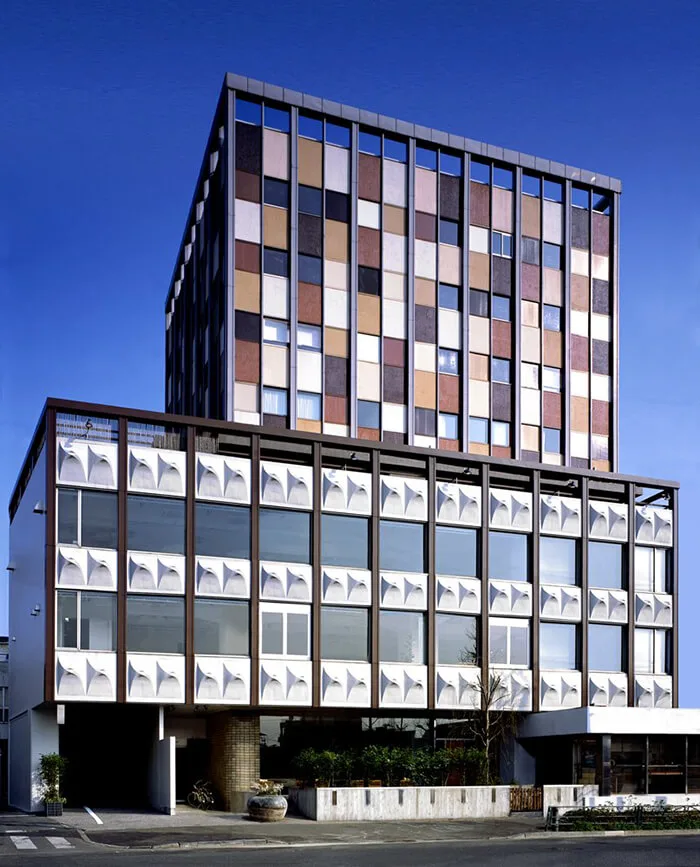
Claska
Conveniently located at 1-3-18 Chuocho, Meguro City, Tokyo 152-0001, Japan, Claska sits in a central spot for all your travel and entertainment needs.
There’s no shuttle service because it’s so close to everything – including a bike rental store.
Not only is it within walking distance to the train station, art center, and Tokyo Tower, it offers great spoilings inside as well.
From the helpful staff and typical amenities to the interesting designs and additional fun, your stay is bound to leave an impression!
Claska’s minimalistic design is spacious and clean with contemporary, sleek decor and custom furnishings.
It has a rooftop terrace with city views and a restaurant that serves Italian, French, and Japanese cuisines.
You’ll have access to free WiFi, TV, and a uniquely artist-designed room.
Rooms may include a desk, seating area, terrace, tatami floors, and a small dining table. The hotel has a hot tub and laundry room but no fitness center or pool.
It’s wheelchair accessible and family-friendly, but pets are not allowed. A hotel that has gallery space and art studios to rent isn’t going to be cheap.
Even with its near-4-star rating, at $200 a night, you can bet your stay here is based on style.
Directions:
From Gakugeidaigaku Station, go eastbound for about 5 minutes. Make a slight left to get onto Michido 420 and turn right. Follow this road until you reach Meguro-dori/Michido 312.
You’ll have passed a 7/11 gas station. Turn left on 312 and follow for just a moment. Turn left onto Chuocho and the hotel will be on your right. This takes about 11 minutes.
46. Tokyu Stay Meguro-Yutenji
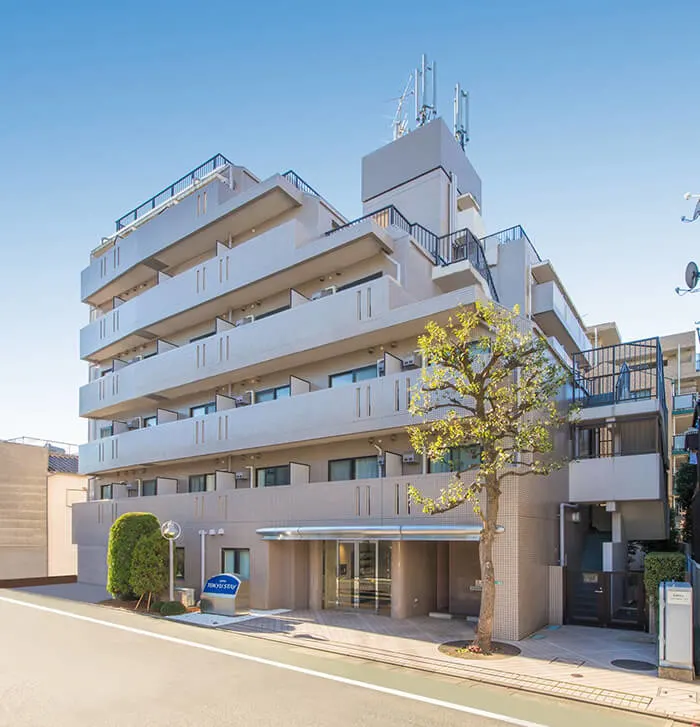
Tokyu Stay Meguro-Yutenji
In the residential area of Meguro, Tokyu Stay can be found just a walk away from Yutenji Station and a short drive from Jiyugaoka (Euro-style neighborhood), the National Art Center, and the Shinjuku Gyoen Park.
This 4-star, non-smoking hotel is perfect for an extended stay.
At an affordable $80-100 a night, rooms may include chabudai dining tables, free WiFi, kitchenettes, tatami floors with updated appliances, and a double bed!
Increased convenience comes from its hassle-free cancellations, laundry area, hot tub, and family-friendly vibe. The small, efficient rooms are clean and wheelchair accessible as well.
This casual hotel is found at 2-15-7 Yutenji, Meguro City, Tokyo 153-0052, Japan, close to the airport. Relax in a decent room with spot on service right where you need it to be.
Tokyu Stay doesn’t have the same city vibe that is sought after in Tokyo, but it offers a splash of suburban life in other Tokyo areas.
Directions:
From Yutenji Station, go southwest, passing a parking area, grocery store, and a real estate agency on your left.
Turn left on the road that follows, then go right after the Rough-Laugh Coffee. The hotel is on your right.
47. The Ritz-Carlton
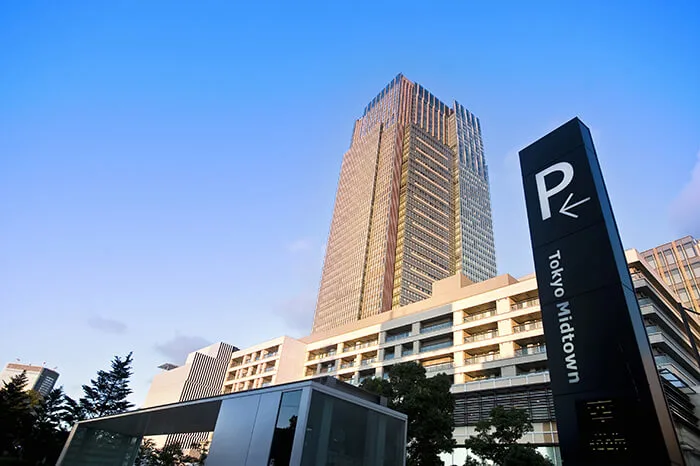
The Ritz-Carlton
This chart-topping hotel is one for the luxury-lovers!
If you crave a taste of the high life and want every bit of your sleep experience in Tokyo to look and feel like you’re on vacation, why not spend your money here?
Located inside the Tokyo Midtown Tower at 9-7-1 Tokyo Midtown, Akasaka, Minato City, Tokyo 107-6245, Japan, the floor-to-ceiling windows of this hotel offer views of the city, Mount Fuji, and Tokyo Bay.
One of the top things to do in Tokyo is to visit the tower, and you’ll already be there!
You’ll also be within walking distance from the National Art Center and a short drive from Haneda Airport.
While there are lots of things to do in Tokyo in very close proximity, your vacation always continues within the hotel itself.
Free WiFi, flat screen TVs, 24/7 room service, and childcare are just a taste of the luxury you’ll see.
The Ritz-Carlton has club-level rooms for ease of access, suites with living rooms and kitchens, and a critically acclaimed French restaurant, modern bistro, and a lounge with a bar.
After a long day of exploration, you can wind down at the hotel spa with saunas, hot tubs, massages, facials, and more!
Do laps in the indoor pool or work out at the gym. If that’s not your style, there are minibars and Nespresso machines available.
The concierge service, baggage storage, and bicycle rental give you simultaneous security and freedom. U.S. payments are accepted with no currency conversion needed.
Parking isn’t free, and pets aren’t allowed, but there is a high amount of handicap accessibility throughout the hotel.
This hotel comes with a hefty price tag that buys you access to spacious rooms with dazzling views. It’s well managed, excellently staffed, and serves tasty foods.
You truly get what you pay for in this business-formal hotel.
Directions:
From Roppongi Station, go northeast on Roppongi-dori (street 412), then turn left at the Mizuho Bank. Follow this street all the way down and turn right at the 7/11 gas station.
Go down to the Tokyo Midtown Mae intersection and make a left onto Gaien Higashi-dori (road 319).
Go right at the intersection and then make a left at the Genies Tokyo restaurant. Continue to the fork where you’ll make a slight left to the hotel.
48. HOSHINOYA Tokyo
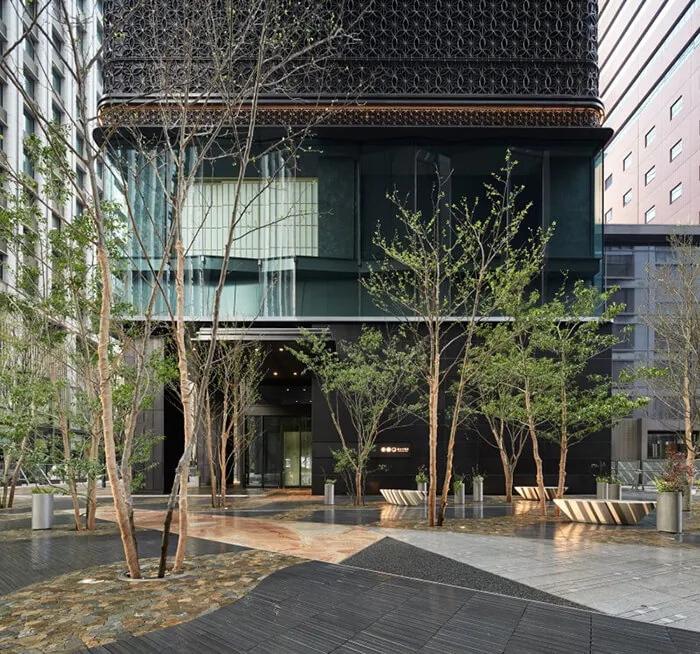
Hoshino Resorts
Traditional meets modern at this semi-hidden gem.
Found at 1-9-1 Otemachi, Chiyoda City, Tokyo 100-0004, Japan, HOSHINOYA is close to Tokyo Station, Otemachi Station, Chidorigafuchi, Yasukuni Shrine, and Tokyo Haneda International Airport.
There is a communal living room on each floor, a hot spring on the roof, and onsite shopping.
The food and service offered are fantastic and you get an immersive look at traditional Asian-style hospitality.
It should be no surprise, then, that you’ll have to surrender your shoes upon entry. It helps to keep things clean and humble. Not everything is reflective of the old ways, though.
Flat screens, kettles, complimentary toiletries, free WiFi, and 24/7 front desk service contribute to the unique environment of a traditional hotel with modern comforts.
Directions:
From Otemachi Station, go west and make a right when you see the Minatoya2 noodle shop.
49. WIRED HOTEL Asakusa
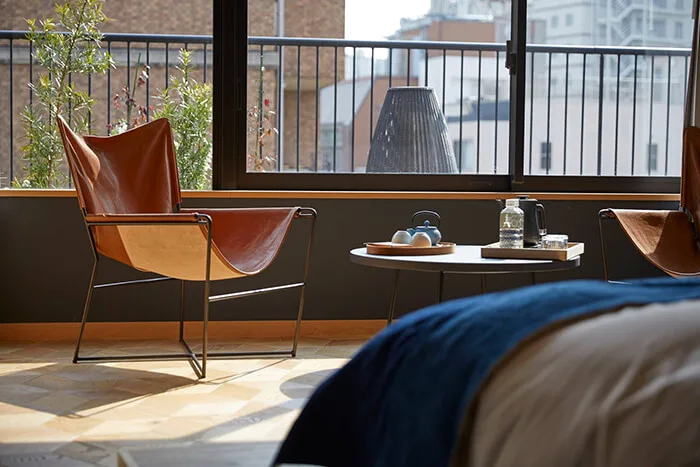
WIRED HOTEL Asakusa
Located at 2-16-2 Asakusa, Taito City, Tokyo 111-0032, Japan, this hotel is close to Senso-Ji temple, transit, Tokyo Skytree, Edo Tokyo Museum, Ryogoku Kokugikan National Sumo Stadium, and the Marunouchi Building.
Each room has free WiFi and a refrigerator. The staff is known to be interactive and helpful.
The reception staff is made up of bilingual members to avoid any hiccups or misunderstandings.
Some rooms have balconies, but a standard room still offers plentiful space. You can also spend time in the shared lounge, or enjoy Japanese cuisine at the hotel restaurant.
WIRED HOTEL is located between multiple train stops but not close enough to be convenient. To make up for this, you can rent a bike from the hotel for easier travel!
Directions:
From Asakusa Station, go north, following Kaminarimon Street. Go right at the Asakusa Town hotel and continue down 3 blocks before turning left after the Home Goods Store.
Follow the road down and walk between the stores Kameya and Kimono Store.
Cross a street to get onto another road with the Umezono restaurant on your left. Follow the street to the end and turn right.
At the end of this road, go left onto Denbouin Street. Follow down to the fork and go the immediate right.
Pass a string of restaurants, passing straight through an intersection and continuing to the next.
At the last intersection, you’ll cross toward the Undon noodle restaurant. Go left at the end of the block and you’ll see the hotel down the street.
50. 9 Hours
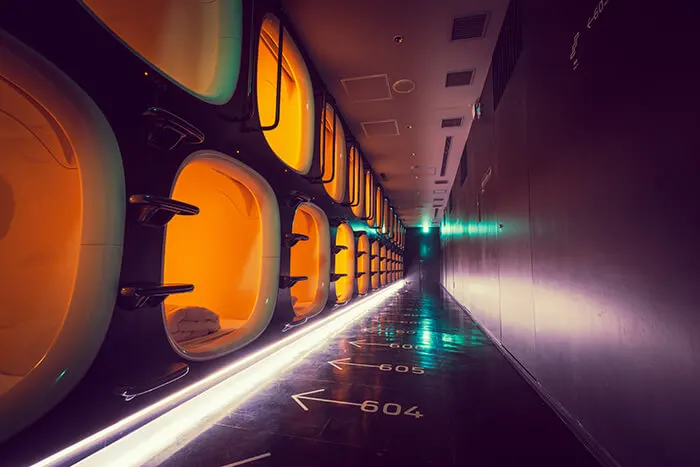
9 Hours
Traveling alone? A capsule hotel is among the unique things to do in Tokyo, Japan.
9 Hours, found at 1-4-15, Hyakunincho, Shinjuku City, Tokyo 169-0073, Japan, is one of several capsule hotels that are popping up all over Tokyo.
It’s a different take on traditional meets modern as your communal areas are still sectioned off to give a bit of privacy.
In all capsule hotels, you share several spaces with other guests.
Each pod is like a glossy den where you can adjust the temperature and lighting to fit your needs and slide down a simple visor for privacy.
9 Hours takes a new-age, minimalist approach to make beds seem more spacious.
Still, each capsule only sleeps one person and a few items. For all of your other belongings, you receive a guest card upon check-in that gives you access to your own personal locker.
The shared bathing and restroom facilities are modified to feel less communal and more comfortable.
Single sinks, individual mirrors, stalls, and bathing rooms are laid out like a locker room at a public pool but don’t seem as intrusive.
Overall, the hotel gives off a beehive vibe with its bunk beds and uniform, clean, and minimalist design.
Though it’s built to accommodate several people all at once, it delivers a high-tech and digital-era look as opposed to prototype capsule hotels.
What’s more, this particular hotel can be very affordable! With the money you save, you can enjoy even more features of Japan.
If that low price makes you weary, the hotel can definitely be justified by the view from the lobby-slash-work area. A quality view of the cityscape for a fraction of the price elsewhere.
Directions:
From Shin-Okubo Station, follow Okubo Street (street 433) eastward for about 2 minutes. 9 Hours is in the Kita-Shinjuku Building 3-8F.
51. Book And Bed Tokyo
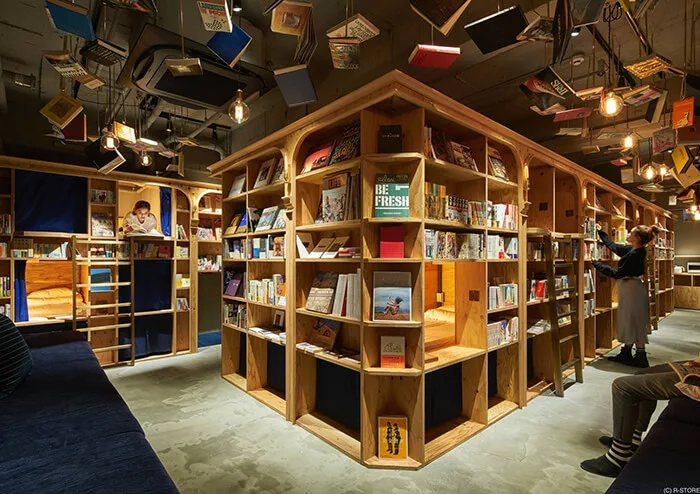
Book And Bed Tokyo
Another hard-to-find but a worthwhile hotel is the Book and Bed at 1-17-7, Nishiikebukuro, Toshima City, Tokyo 171-0021, Japan.
It’s a bookstore-themed hotel with thousands of books for use and decoration.
If you’re a bookworm, the very thought of this one-of-a-kind sleep spot may have you thinking, “Finally, a chance to stay the night in the library!”
This quaint hotel has two sizes of sleep compartments that resemble the previously mentioned pods.
In this case, they’re bunk beds hidden within the stacks of books! Snacks and drinks are sold at the hotel’s store, and restrooms are available.
There are no extra amenities but it’s just down the road from a bunch of eateries and other attractions.
Directions:
From Ikebukuro Station, walk toward Metropolitan Street, then follow Michido 441.
You’ll see a Starbucks and an Italian restaurant on your left. Go into the Lumiere Building to the 7th floor.
52. Odaiba Oedo-Onsen-Monogatari
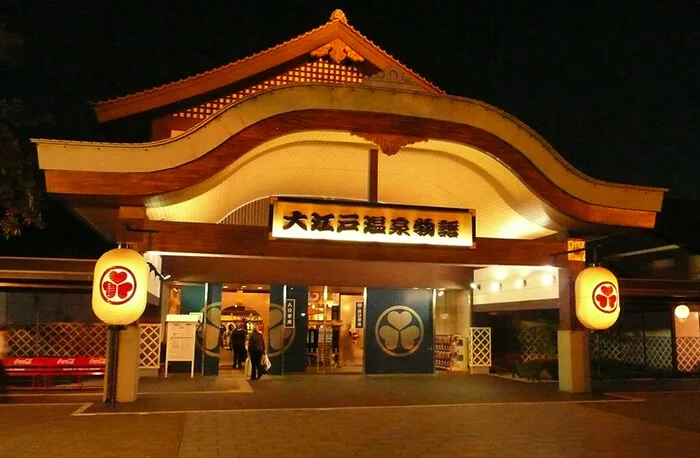
Odaiba Oedo-Onsen-Monogatari (Dushan Hanuska / flickr)
Visiting this onsen is a multi-coverage experience when it comes to things to do in Tokyo.
Located at 2-6-3 Aomi, Koto City, Tokyo 135-0064, Japan, Odaiba Oedo is in the heart of Tokyo and offers culture, history, and relaxation.
This onsen resembles a traditional Japanese countryside hot spring resort. There’s a shared hot spring at the top for the rooms with futon-only sleepers.
There are common areas for tea and coffee, public foot baths, and communal bathrooms for the authentic traditional Japanese experience.
You can upgrade your rental to spacious and plush rooms with access to open-air baths and saunas. Optional tatami floors are also available.
Regardless of room choice, all guests get free breakfast, WiFi, and TV.
The onsen is within walking distance from Telecom Center Station, Miraikan Science Museum, and Tokyo Tower.
If you’re still unsure of what to do in Tokyo, you can relax in the natural hot springs to bide your time.
Even if you’re not a hotel guest, the public foot baths, indoor and out are available to paying guests and passers-by alike.
The onsen has a restaurant attached and is consistently praised for its friendly service.
Directions:
From Telecom Center Station, go southwest on Metropolitan Road 482, then turn left at the Telecom Station intersection.
Use the first road on the right which enters into a parking lot and passes a bike rental spot. It loops around to the onsen.
Neighboring Cities
Much of the tourism that enters Japan is directed at Tokyo, but there are several wonders to be found elsewhere.
For example, Osaka is home to a great historical landmark and Kyoto is a great spot for outdoor exploration.
Being in closer proximity to each other than Tokyo, they’re ideal for adventurous types whereas Tokyo is one big adventure in itself.
Here are some things to check out if you are visiting the neighboring cities:
53. Osaka Castle
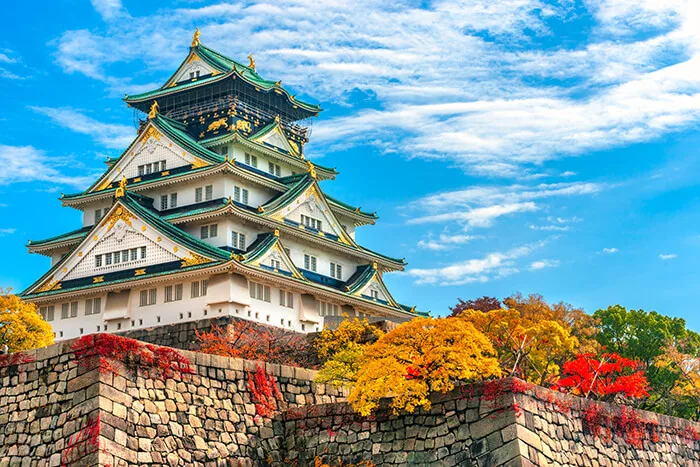
Osaka Castle
The Osaka Castle at 1-1 Osakajo, Chuo Ward, Osaka, 540-0002, Japan is among the most famous landmarks of Japan.
It’s historical significance still plays a role in Japanese life today. For a cultural feel outside Tokyo, look for the castle and other things to do in Osaka.
Directions:
From Morinomiya Station, go west along Chuo Odori, then make a sharp right at the Seongnam intersection.
Make a slight left and continue to follow the road, weaving through the forest and water until you reach the castle at the center.
54. Arashiyama
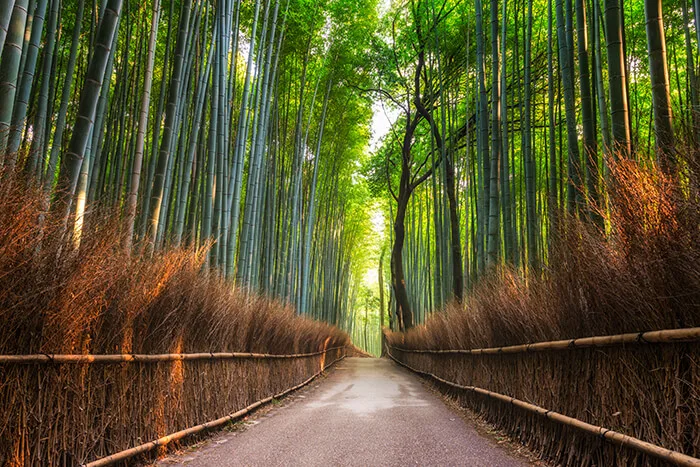
Arashiyama
If you’re hopping around in search of things to do in Kyoto as well, visit the Arashiyama bamboo forest in Kyoto.
Surround yourself with the natural beauty of Japan’s wilderness which includes close encounters with monkeys!
Kyoto used to be Japan’s capital. It’s home to the historic, mountainous region located at Arashiyama, Ukyo Ward, Kyoto, 616-0007, Japan.
The mountain is accessible via the Oi River and provides an oasis to all who visit.
Directions:
From Matsuo-Taisha Station, go north on Fudou 29 toward Shijo Street. When the road ends, go left to stay on Fudou 29.
After crossing the Katsura River, go left at the Togetsu Bridge intersection. Follow road 112 to a boat rental company.
55. Anata No Warehouse
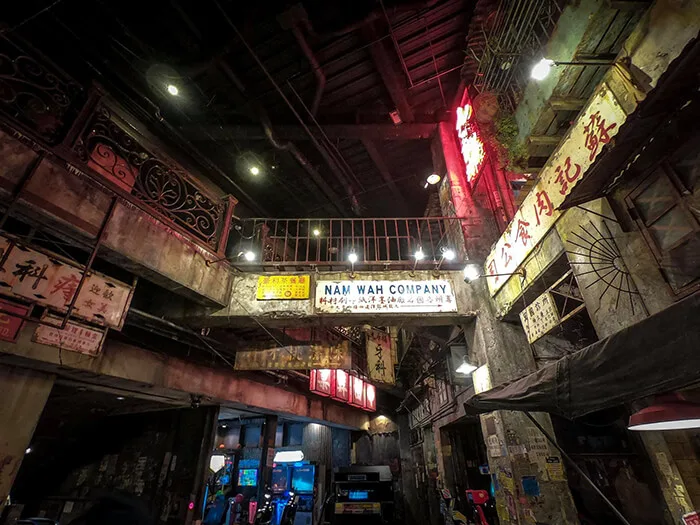
Anata No Warehouse
This warehouse is a 5-story arcade space just outside Tokyo at 3-7 Nisshincho, Kawasaki Ward, Kawasaki, Kanagawa 210-0024, Japan.
Its design is inspired by Kowloon Walled City in Hong Kong which was replaced by a more government-regulated area.
The vibe is intentionally hectic and dystopian, but it’s all fun and games inside.
Directions:
From Kawasaki Station, take the bus to Kawasakishogakkozen Bus Stop, then walk along Tram Street 140 to the warehouse.
Well, if you manage to reach this part of the article, your Tokyo’s itinerary should be pretty full now!
Final Advice
When planning a trip to Tokyo, keep this short list of travel tips in mind:
- Buy tickets and make reservations in advance.
- Budget your finances.
- Explore with an open mind and don’t expect anything.
- Get a Suica or Pasmo bus card to get around easier and quicker.
- Research cultural customs for how to dress.
- Come with gifts, Leave with gifts.
- Research customs for how to behave.
